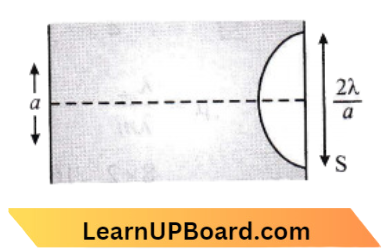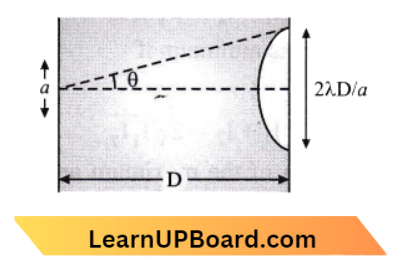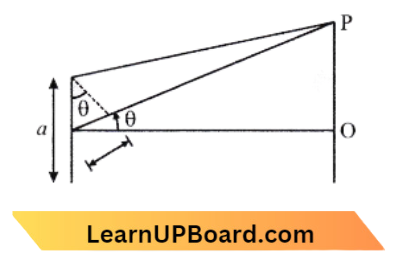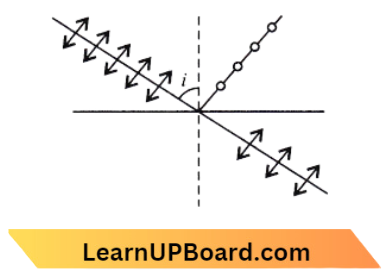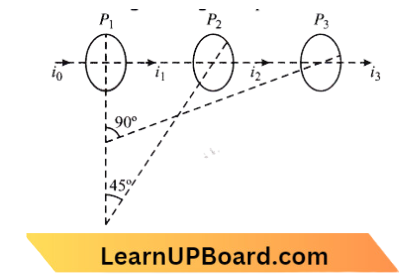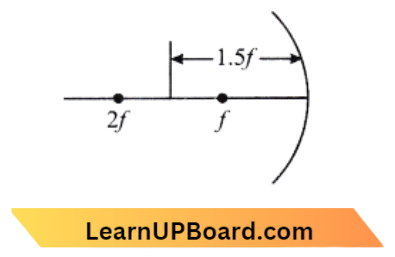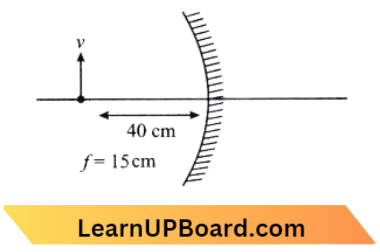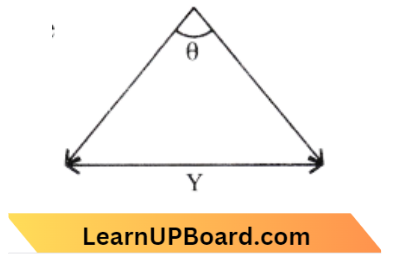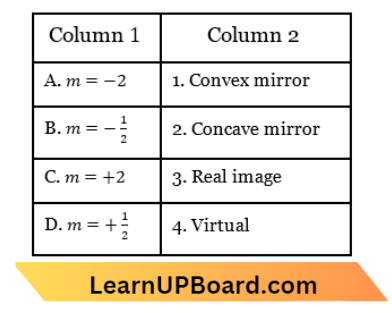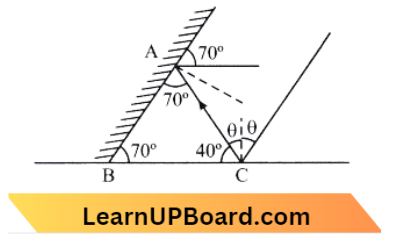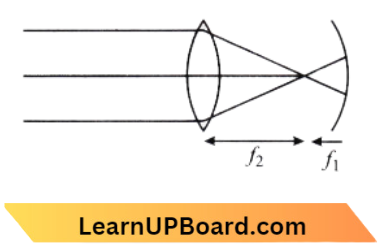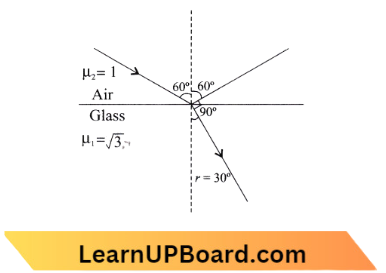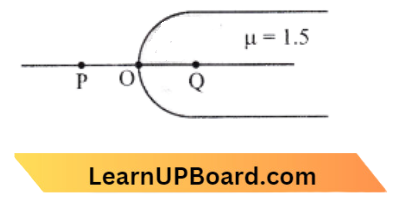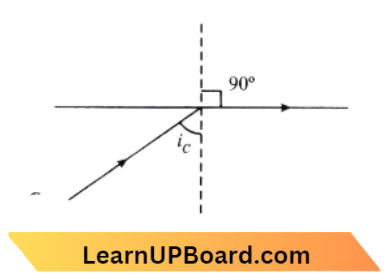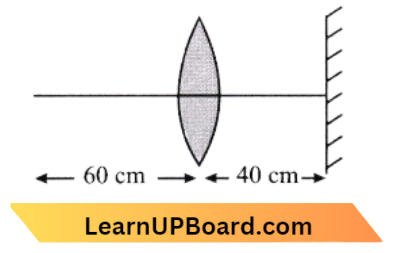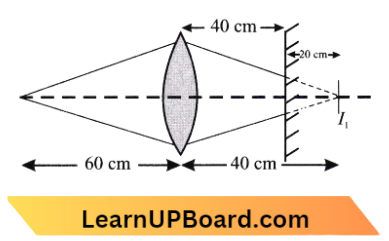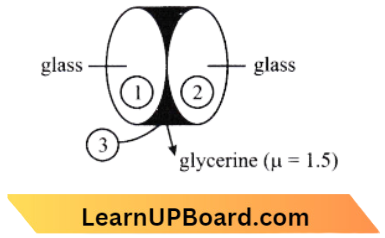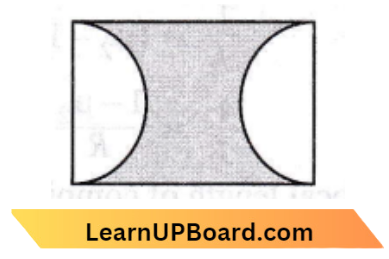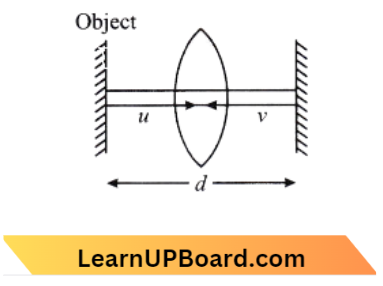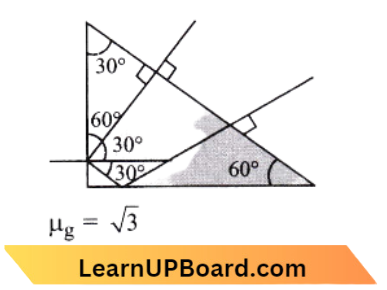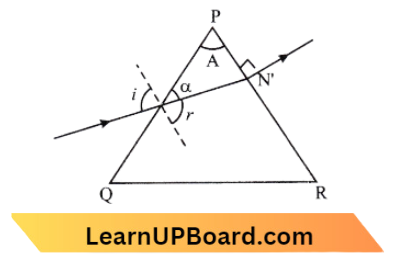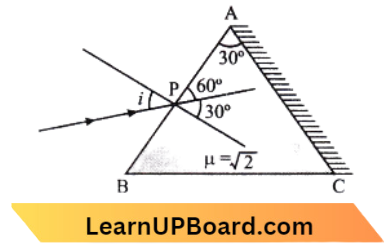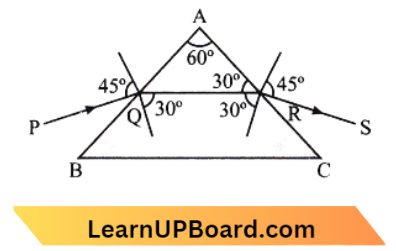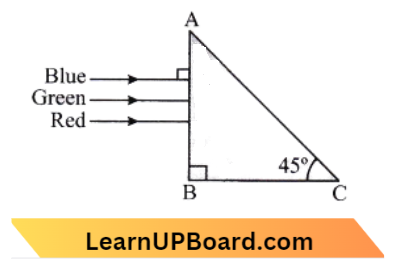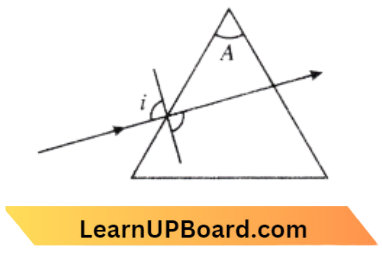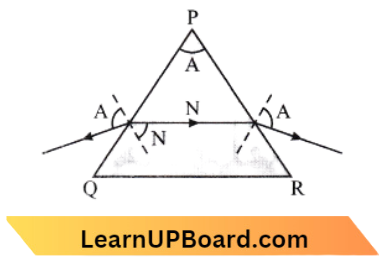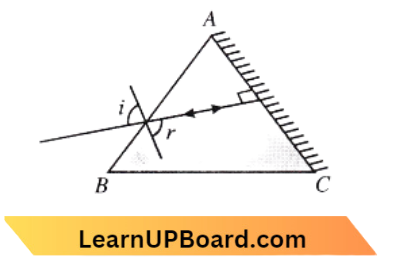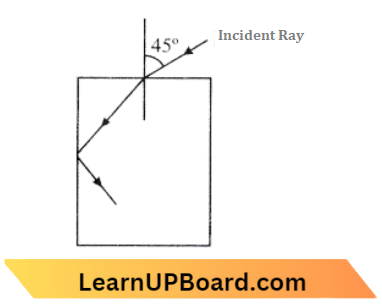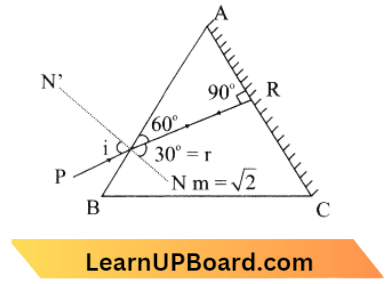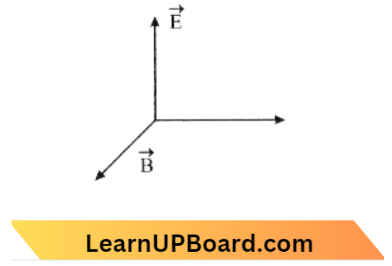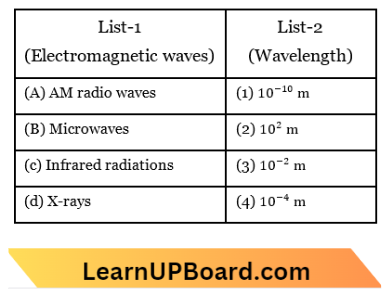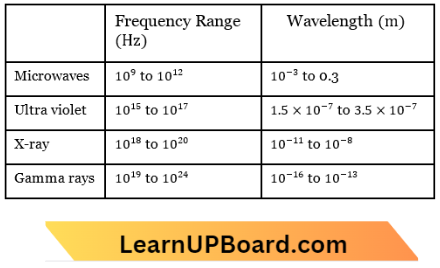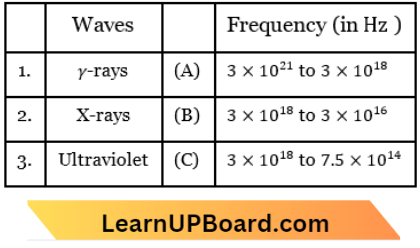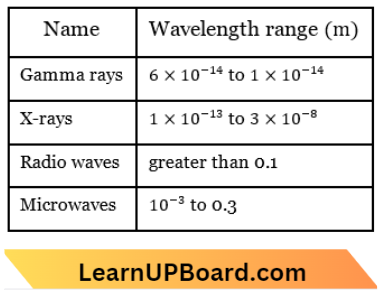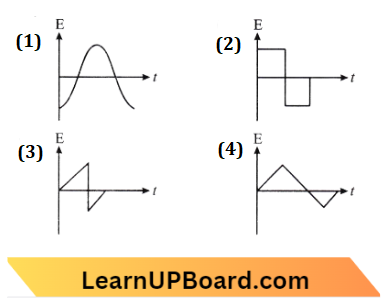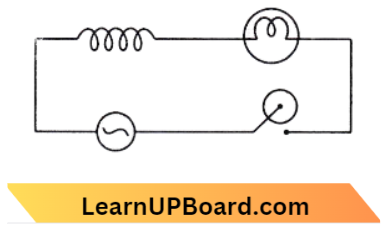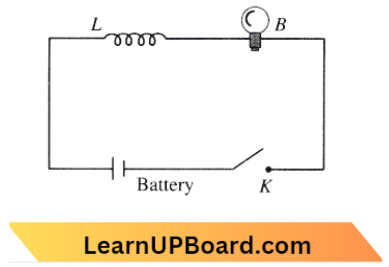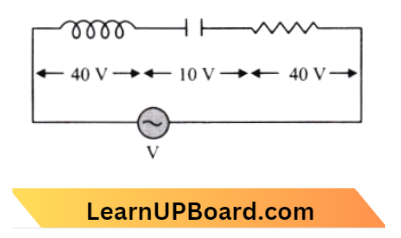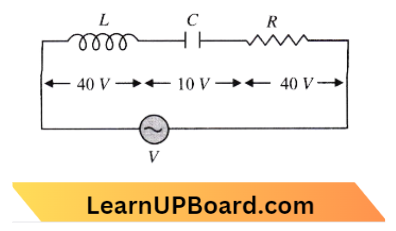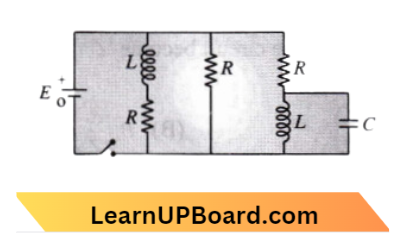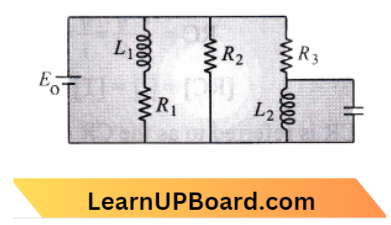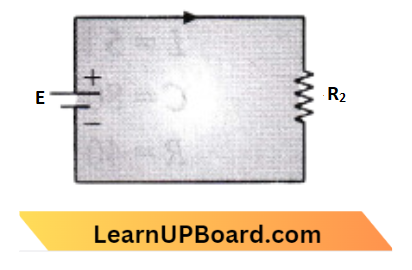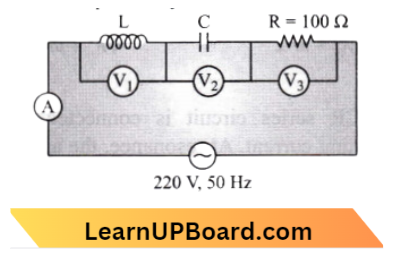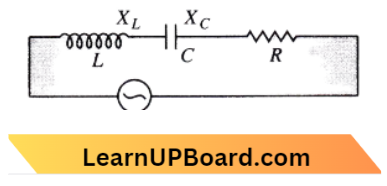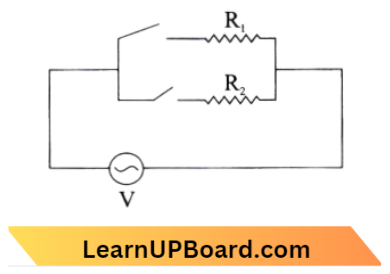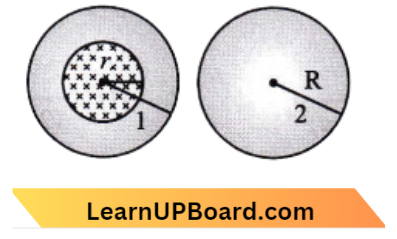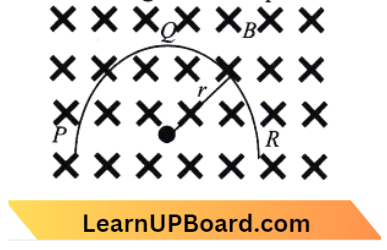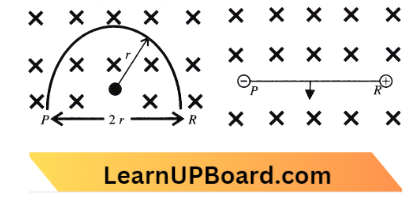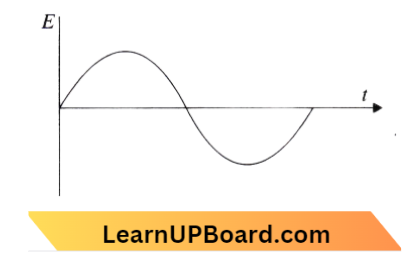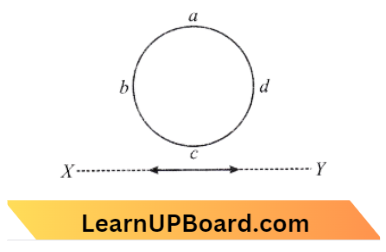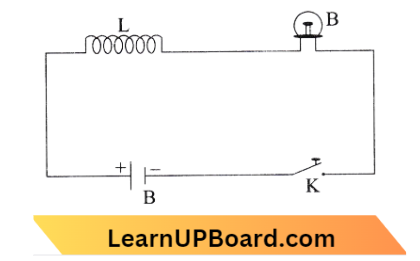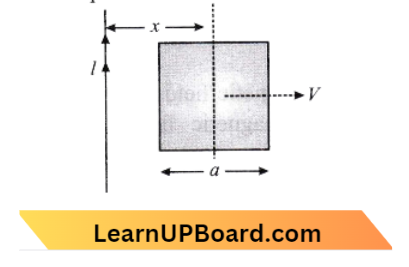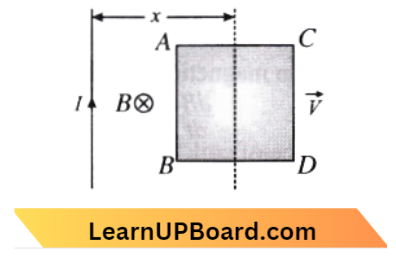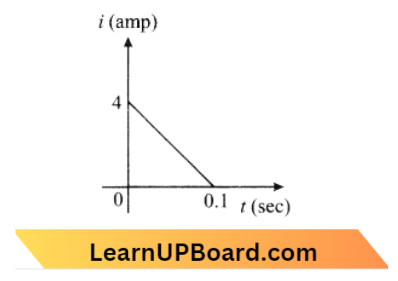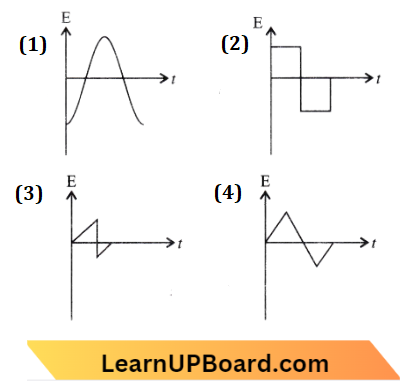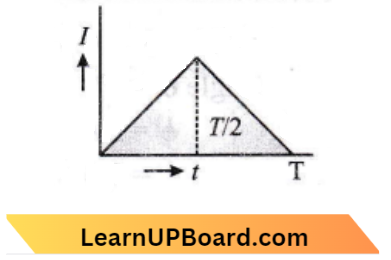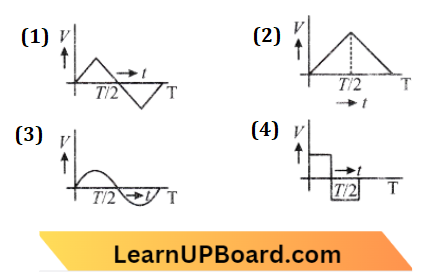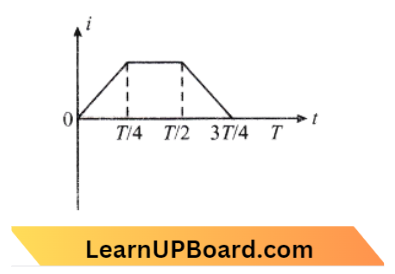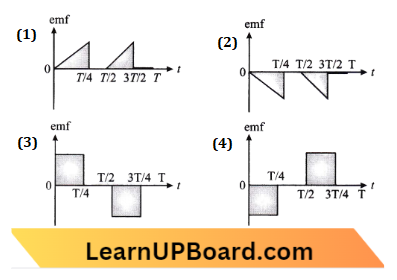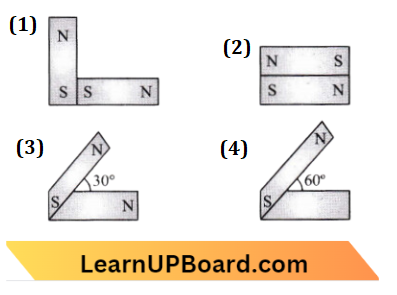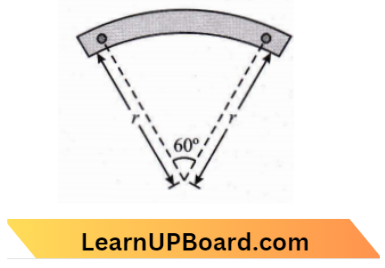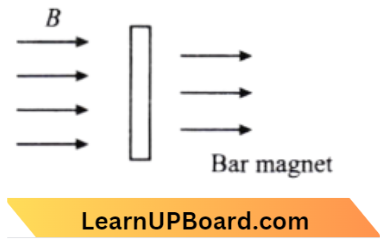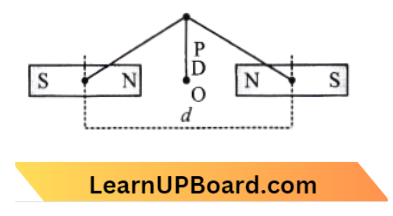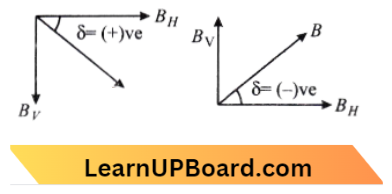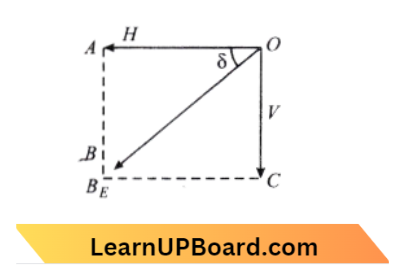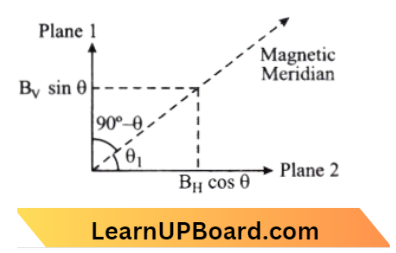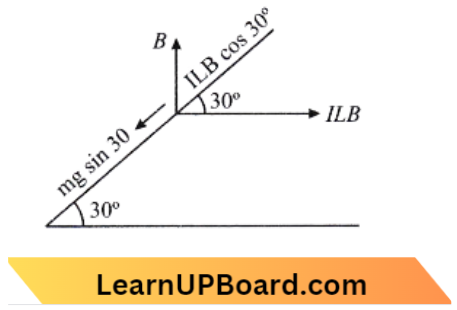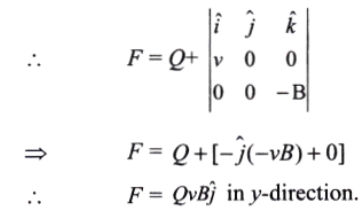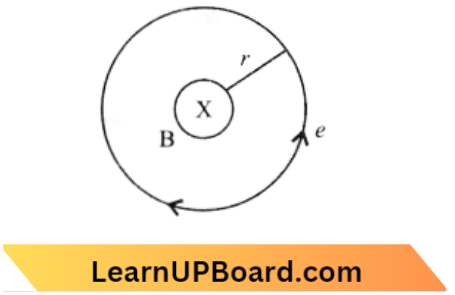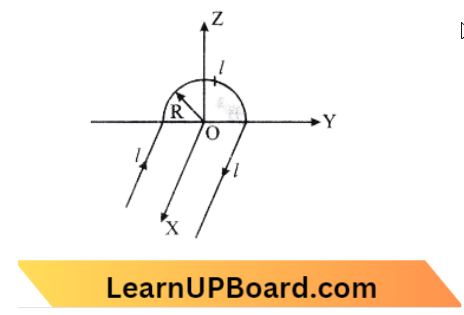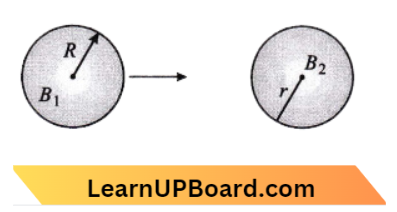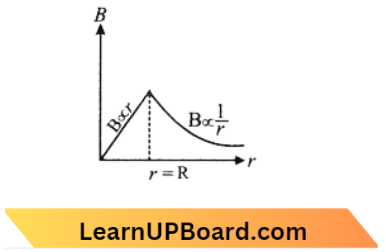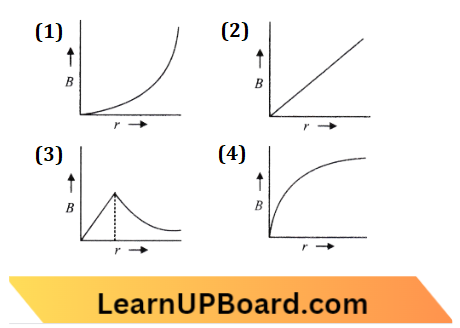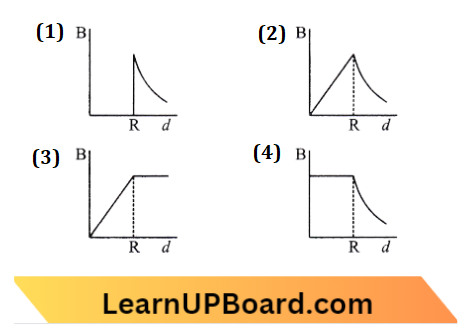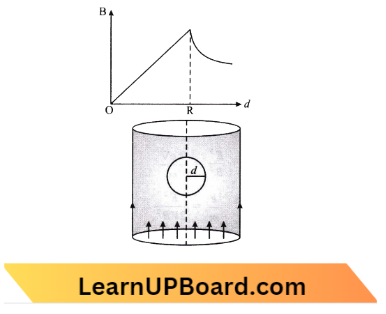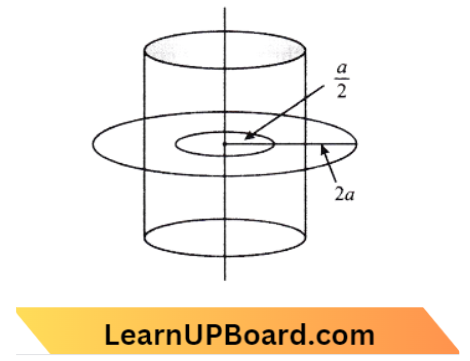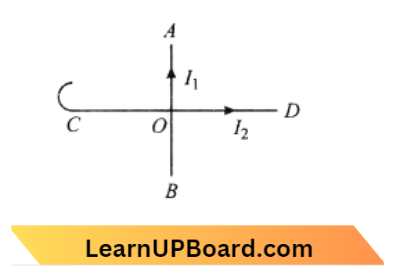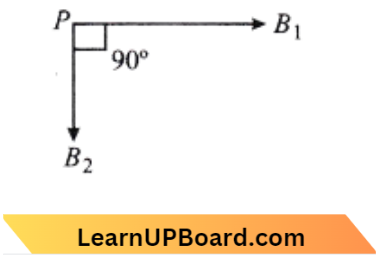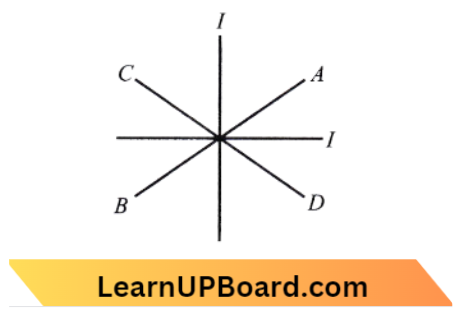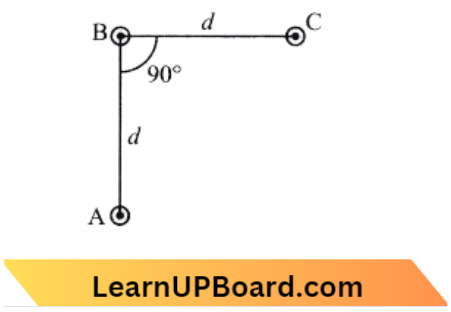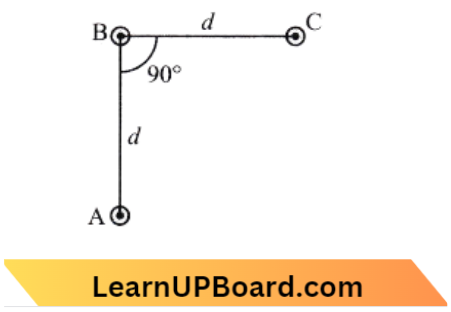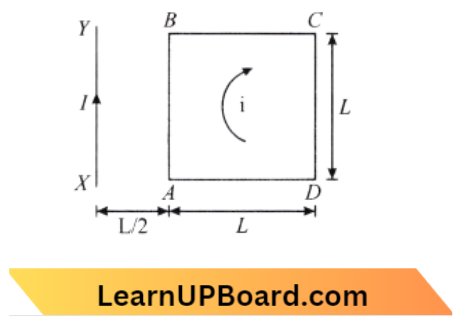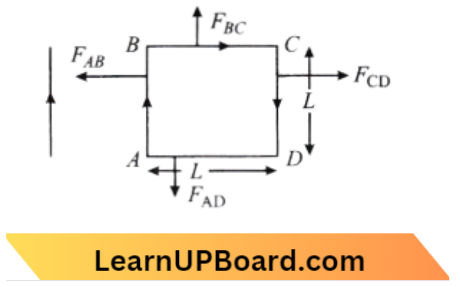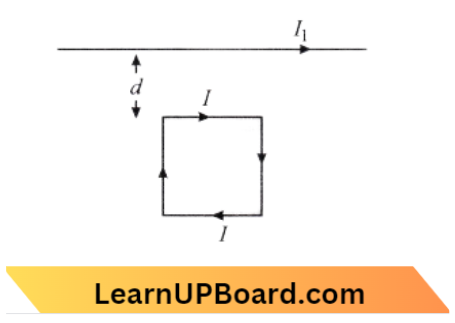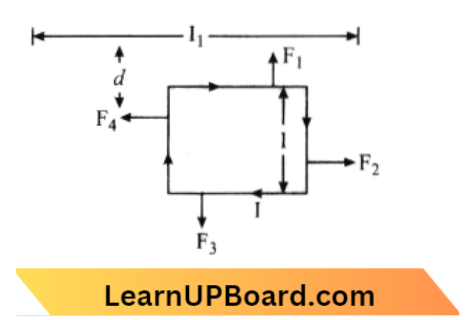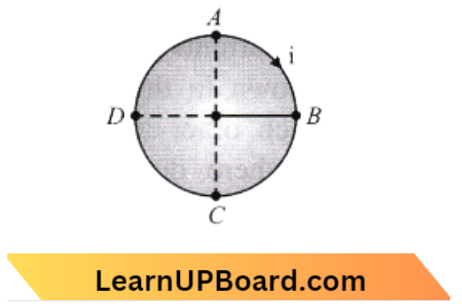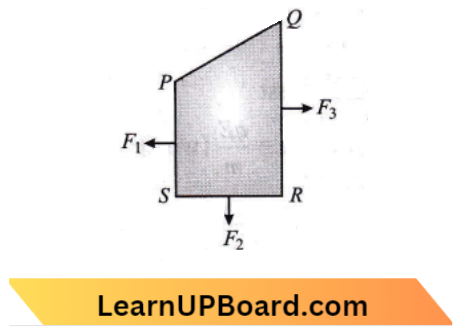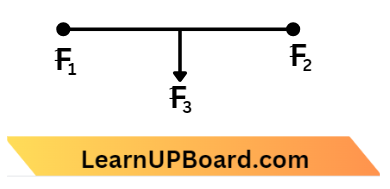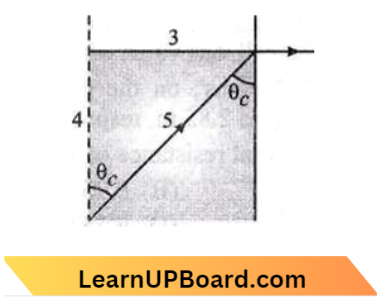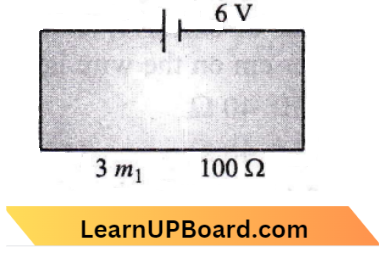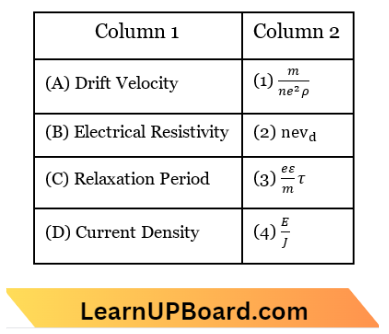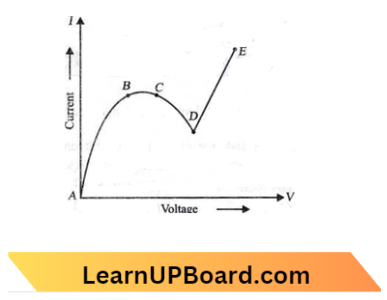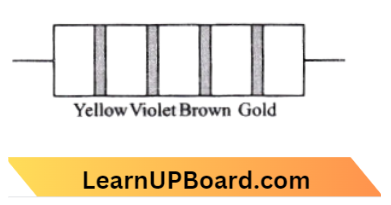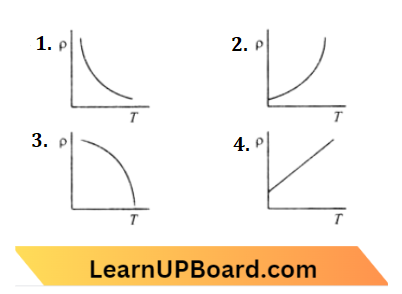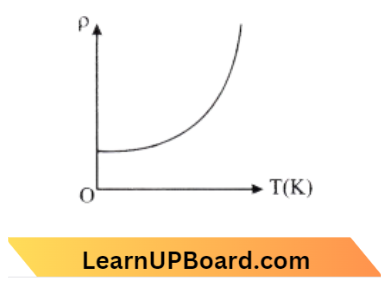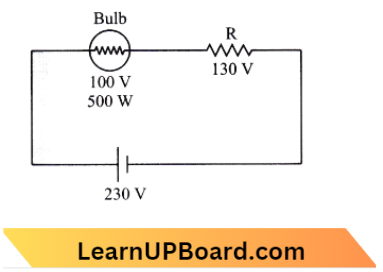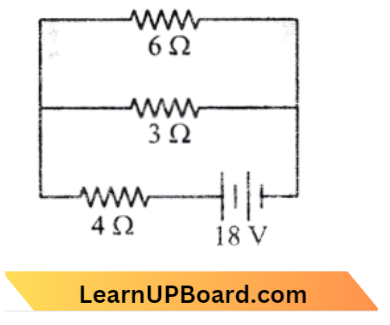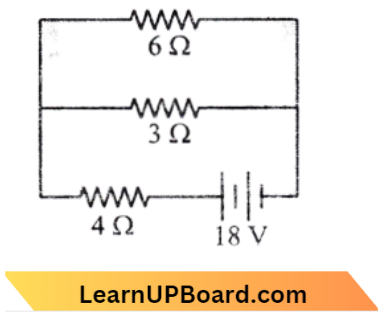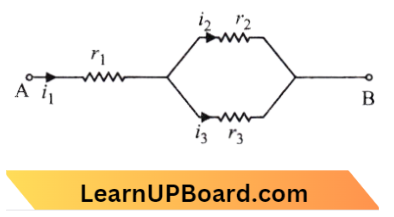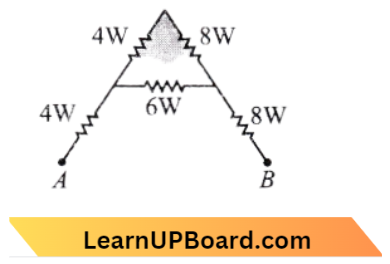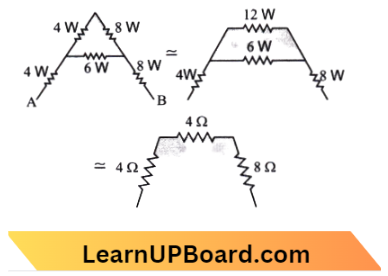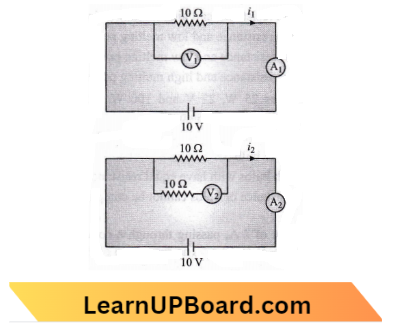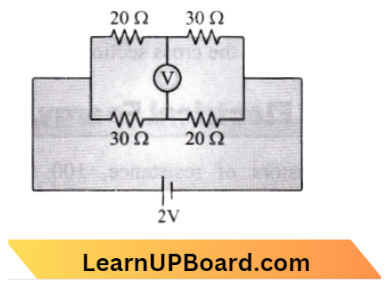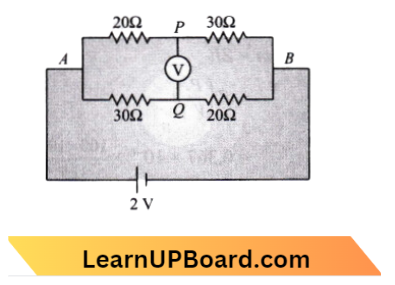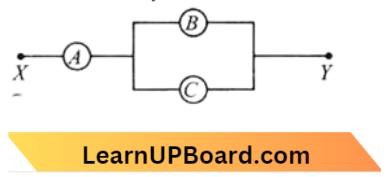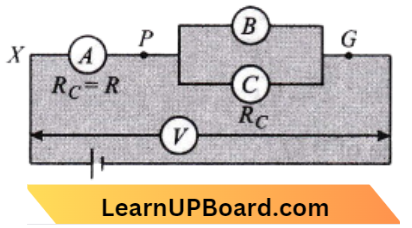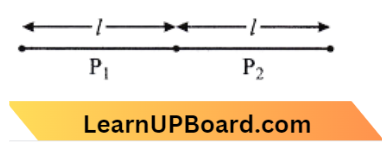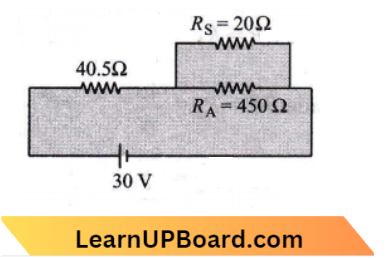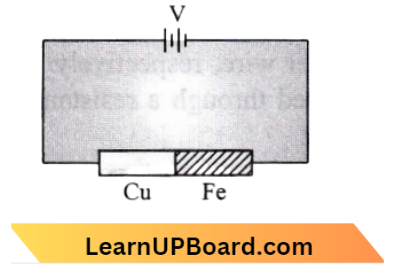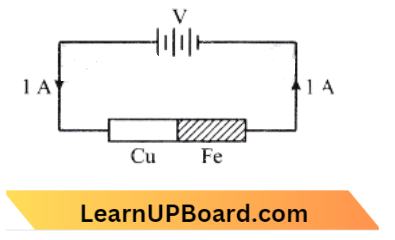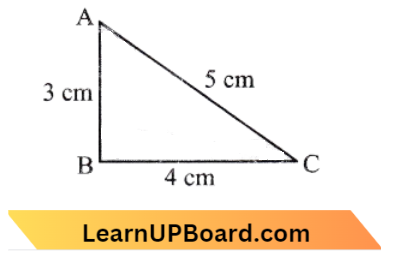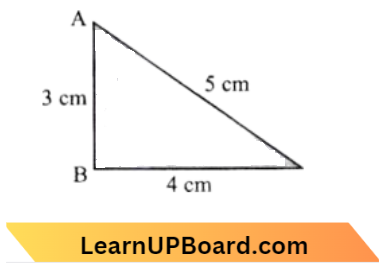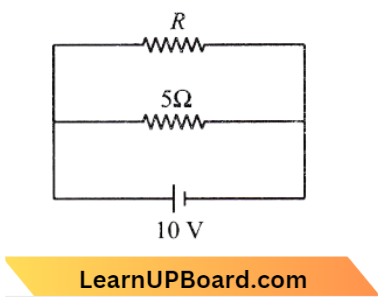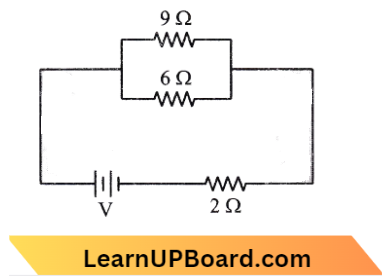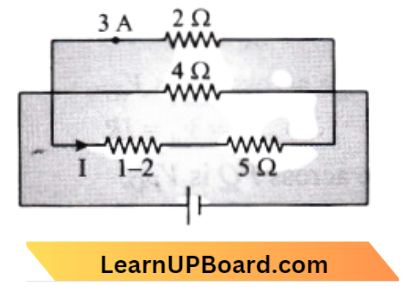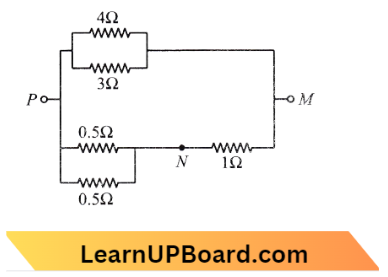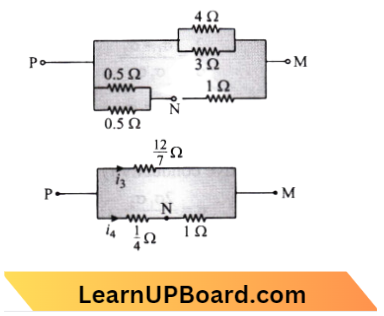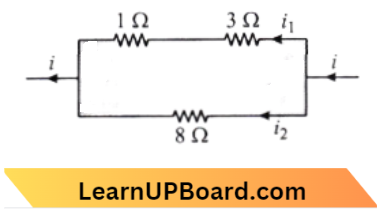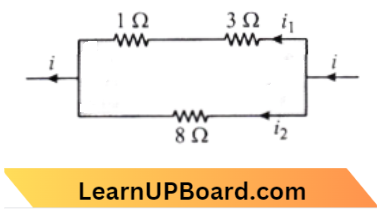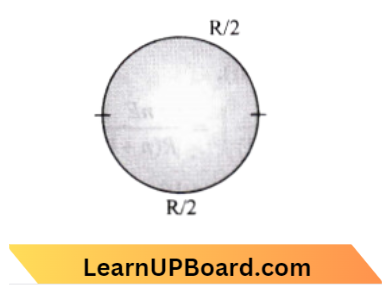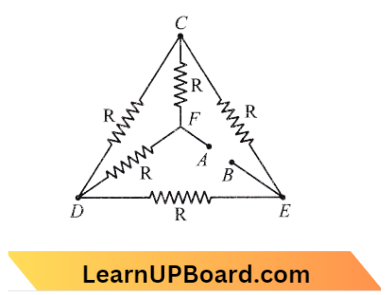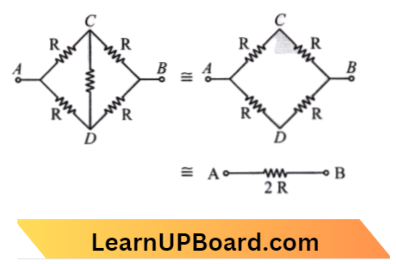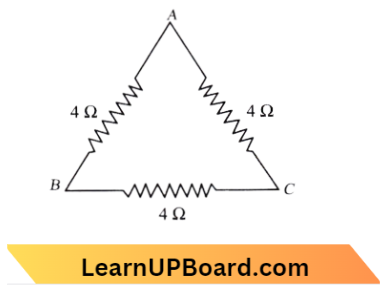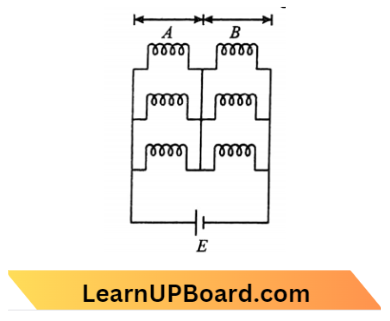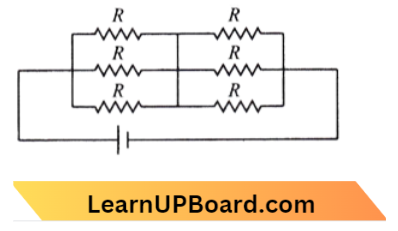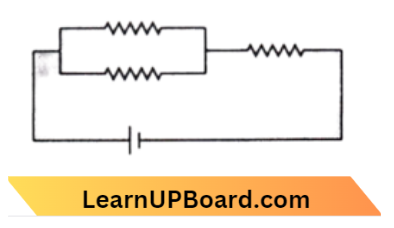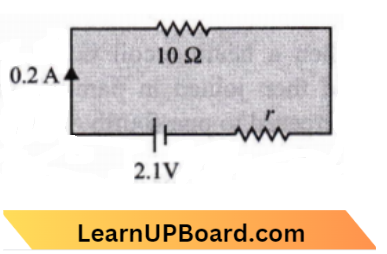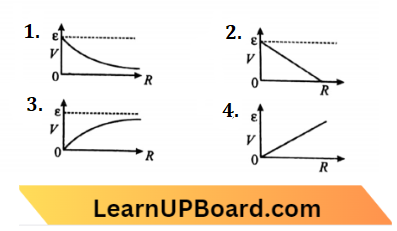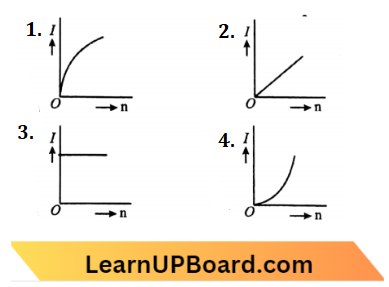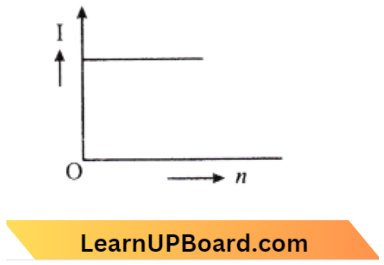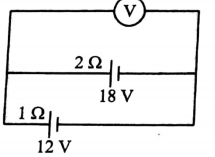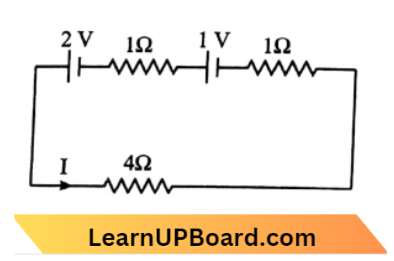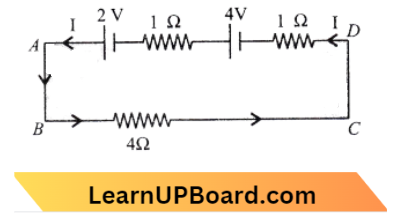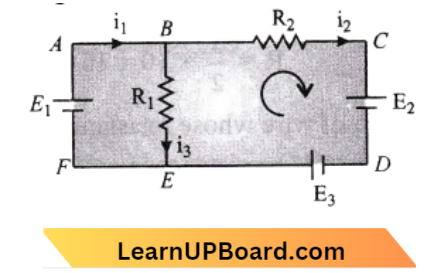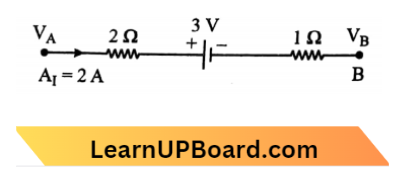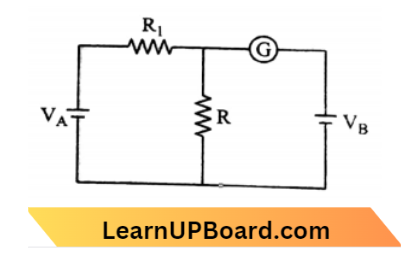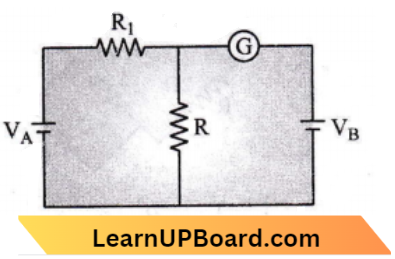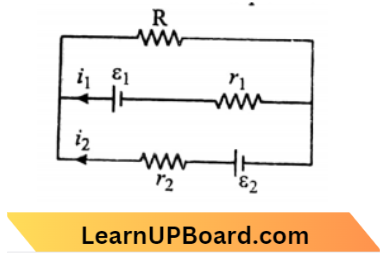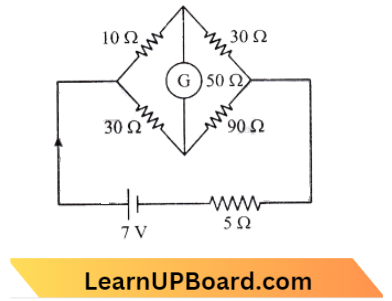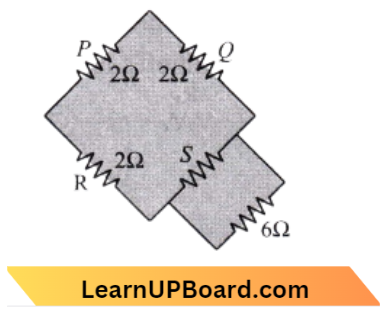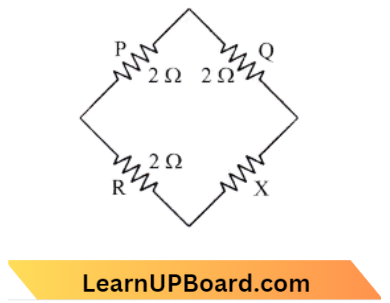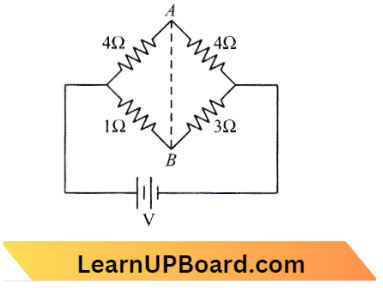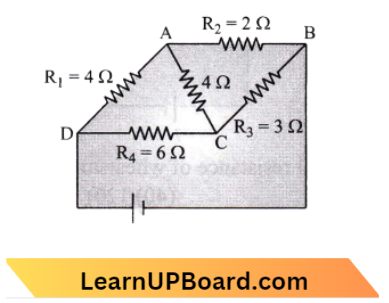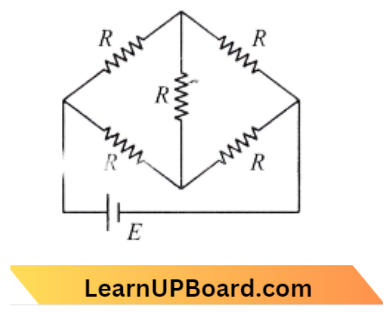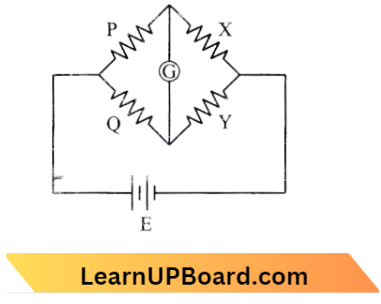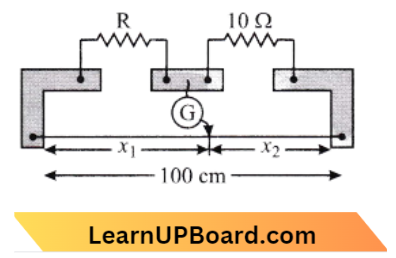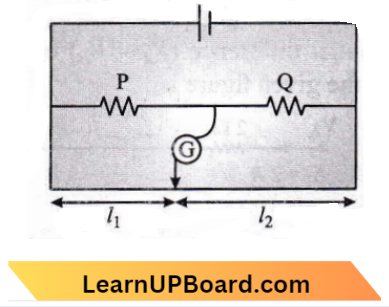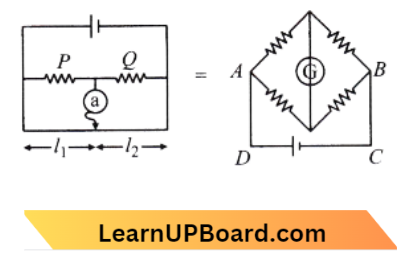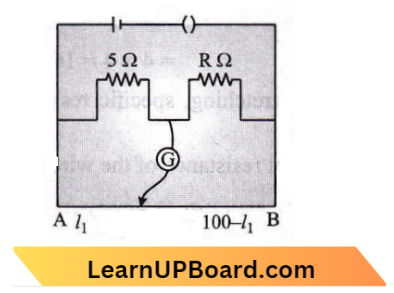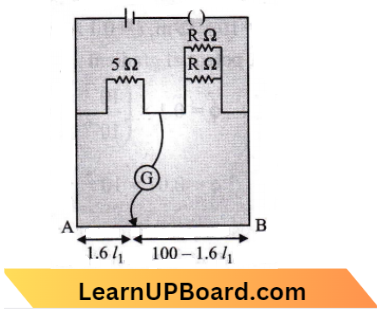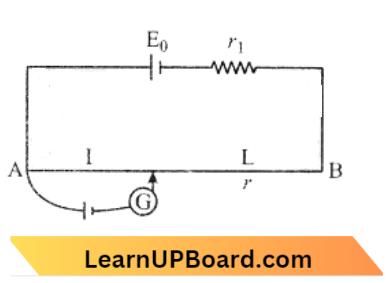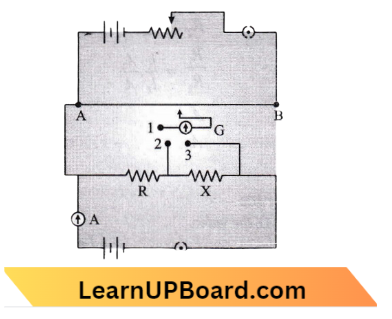NEET Physics For Nuclei Multiple Choice Questions
Question 1. When an a-particle of mass m moving with velocity v bombards on a heavy nucleus of charge Ze, its distance of closest approach from the nucleus depends on m as:
- \(\frac{1}{\sqrt{m}}\)
- \(\frac{1}{m^2}\)
- m
- \(\frac{1}{m}\)
Answer: 4. \(\frac{1}{m}\)
At the closest distance of approach, the kinetic energy of the particle will convert completely into electrostatic potential energy
Here K.E=\(\frac{1}{2} m v^2\)
Electrostatic potential energy,
= \(\frac{K Q q}{d}\)
⇒ \(\frac{1}{2} m v^2 =\frac{K Q q}{d}\)
d \(\propto \frac{1}{m}\)
Question 2. The nuclei of which one of the following pairs of nuclei are isotones?
- \({ }_{34} \mathrm{Se}^{74},{ }_{31} \mathrm{Ga}^{71}\)
- \({ }_{38} \mathrm{Sr}^{84},{ }_{38} \mathrm{Ga}^{86}\)
- \({ }_{42} \mathrm{Se}^{92},{ }_{40} \mathrm{Ga}^{92}\)
- \({ }_{20} \mathrm{Se}^{40},{ }_{16} \mathrm{Ga}^{12}\)
Answer: 1. \({ }_{34} \mathrm{Se}^{74},{ }_{31} \mathrm{Ga}^{71}\)
The Isotones mean several neutrons remain the same.
Question 3. A nucleus represented by the symbol \({ }_{\mathrm{Z}}^{\mathrm{A}} \mathrm{X}\) has:
- Z neutrons and A-Z protons
- Z protons and A – Z neutrons
- Z protons and A neutrons
- Z protons and Z – A neutrons
Answer: 2. Z protons and A – Z neutrons
Z= Number of protons
The total number of protons and the number
.’. Number of neutrons, N =A- Z
Read and Learn More NEET Physics MCQs
Question 4. In the nucleus of \({ }_{\mathrm{Z}}^{\mathrm{A}} \mathrm{X}\), the number of protons, neutrons, and electrons are:
- 11,12,0
- 23, 12, 11
- 12, 11, 0
- 23, 11, 12
Answer: 1. 11,12,0
Z= 11 i.e., number of protons = 11, A = 23
Number of neutrons = A – Z= 12
Number of electron= 0 (No electron in the nucleus)
Therefore 11,12,0.
Question 5. A nucleus of mass number 189 splits into two nuclei having mass numbers 125 and 64. The ratio of the radius of two daughter nuclei respectively is:
- 1: 1
- 4 : 5
- 5:4
- 25: 16
Answer: 3. 5:4
Nuclear radius, R=\(R_0 A^{\frac{1}{3}}\)
R \(\alpha(A)(A)^{\frac{1}{3}} \)
⇒ \(\frac{R_1}{R_2} =\left(\frac{125}{64}\right)^{1 / 3}\),
∴ \(\frac{R_1}{R_2} =\frac{5}{4}\)
Question 6. If radius of the \({ }_{13}^{27} \mathrm{Al}\) nucleus is taken to be \(R_{A l}\) then the radius of \({ }_{13}^{125} \mathrm{Te}\) nucleus is nearly:
- \(\left(\frac{53}{13}\right)^{\frac{1}{3}} R_{A l}\)
- \(\frac{5}{3} R_{A l}\)
- \(\frac{3}{5} R_{A l}\)
- \(\left(\frac{13}{53}\right)^{\frac{1}{3}} R_{A l}\)
Answer: 2. \(\frac{5}{3} R_{A l}\)
The radius of the nucleus is,
R =\(R_0 A^{1 / 3}\)
R \(\propto A^{1 / 3} \)
⇒ \(\frac{R_{\mathrm{A} l}}{R_{\mathrm{Te}}} =\left(\frac{A_{\mathrm{A} l}}{A_{\mathrm{Te}}}\right)^{\frac{1}{3}}=\left(\frac{27}{125}\right)^{\frac{1}{3}}=\frac{3}{5} \)
∴ \(R_{\mathrm{Te}} =\frac{5}{3} R_{\mathrm{Al}}\)
Question 7. If the nuclear radius of \({ }^{27} \mathrm{Al}\) is 3.6 Fermi, the approximate nuclear radius of \({ }^{64} \mathrm{Cu}\) in Fermi is:
- 2.4
- 1.2
- 4.8
- 3.6
Answer: 3. 4.8
We know that, For \(\mathrm{A}_1\) Nuclear Radius r \(\propto A^{1 / 3}\)
where, \(\mathrm{A}\)= mass number
⇒ \(r=r_0 A^{1 / 3} \)
= \(r_0(27)^{1 / 3}=3 r_0 \text { since nuclear radius is } 27 \text { (given) }\)
⇒ \(r_0=\frac{3.6}{3}=1.2 \mathrm{fm}\)
For \(\mathrm{Cu} r=r_0 \mathrm{~A}^{1 / 3}=1.2 \mathrm{fm}(6.4)^{1 / 3}=4.8 \mathrm{fm}\)
Question 8. Two nuclei have their mass numbers in the ratio of 1 : 3. The ratio of their nuclear densities would be:
- 1:3
- 3: 1
- \((3)^{1 / 3}: 1\)
- 1: 1
Answer: 4. 1: 1
The density of nuclear matter is independent of mass number so the required ratio is 8: 1.
Question 9. If the nucleus \({ }_{13}^{27} \mathrm{Al}\)has a nuclear radius of about 3.6 fm, then \({ }_{32}^{125} \mathrm{Te}\) would have its radius approximately as:
- 9.6 fm
- 12.0 fm
- 4.8 fm
- 6.0 fm.
Answer: 4. 6.0 fm.
R=\(R_0 A^{1 / 3}\)
⇒ \(\frac{R_{\overparen{T e}}}{R_{A l}}=\left(\frac{125}{27}\right)^{1 / 3}=\left(\frac{5^3}{3^3}\right)^{1 / 3} \)
=\(\frac{5}{3} \)
∴ \(R_{T e}=\frac{5}{3} \times 3.6=6 \mathrm{fm} \)
Question 10. The radius of germanium (Ge) nuclide is measured to be twice the radius of 9 Be . The number of nucleons in Ge is:
- 72
- 73
- 74
- 75
Answer: 1. 72
Nuclear radii, R =\(R_0 A^{1 / 3}\)
⇒ \(R_0 =1.2 \mathrm{fm}\)
R \(\propto(A)^{1 / 3}\)
Where, \(R_0=1.2 \mathrm{fm}\)
or R \(\propto(A)^{1 / 3}\)
⇒ \(\frac{R_{H_e}}{R_{G_e}}=\frac{(a)^{\frac{1}{3}}}{(A)^{\frac{1}{3}}}\)
or \(\frac{R_{H_e}}{2 R_{B^*}}=\frac{(q)^{\frac{1}{3}}}{(\lambda)^{\frac{1}{3}}}\)
Given \(R_{G e} =2 R_{B C} \)
⇒ \((A)^{1 / 3} =2 \times(9)^{1 / 3} \)
A =23 \(\times 9=8 \times\) 9=72
or Number of nuclei is Ge is 72
Question 11. The volume occupied by an atom is greater than the volume of the nucleus by a factor of about:
- 101
- 105
- 1010
- 1015
Answer: 4. 1015
∴ \(\frac{\text { Volume of atom }}{\text { Volume of nucleus }}=\frac{\frac{4}{3} \pi\left(10^{-10}\right)^3}{\frac{4}{3} \pi\left(10^{-15}\right)^3}\)
Question 12. A nucleus with mass number 240 breaks into two fragments each of mass number 120, the binding energy per nucleon of unfragmented nuclei is 7.6 MeV while that of fragments is 8.5 MeV. The total gain in the Binding Energy in the process is:
- 0.9 MeV
- 9.4 MeV
- 804 MeV
- 216 MeV
Answer: 2. 9.4 MeV
Given,
A nucleus with mass number 240 breaks into two fragments each of mass number 120, the binding energy per nucleon of unfragmented nuclei is 7.6 MeV while that of fragments is 8.5 MeV.
\(A_1\) =240
⇒ \(A_2 =A_3\)=120
⇒ \(\mathrm{BE}_1 =7.6 \mathrm{MeV}\)
⇒ \(\mathrm{BE}_2 =\mathrm{BE}_3=8.5 \mathrm{MeV} \)
⇒ \(\Delta \mathrm{BE}^2 =\mathrm{BE}_2+\mathrm{BE}_3-\mathrm{BE}_1 \)
= 8.5+8.5-7.6
= 17-7.6
= 9.4 \(\mathrm{MeV}\)
Question 13. The energy equivalent of 0.5 g of a substance is:
- 4.5 x 1013 J
- 1.5 x 1013J
- 0.5 x 1013 J
- 45 x 1016 J
Answer: 1. 4.5 x 1013 J
Given, m=0.5 \(\mathrm{~g}=0.5 \times 10^{-3} \mathrm{~kg}\)
Einstein’s mass-energy equivalence relation,
E=m \(c^2\)
Where, c= velocity of light =3 \(\times 10^8 \mathrm{~m} / \mathrm{s}\)
⇒ \(\mathrm{E} =0.5 \times 10^{-3} \times\left(3 \times 10^8\right)^2 \)
=4.5 \(\times 10^{13} \mathrm{~J}\) .
Question 14. The binding energy per nucleon of \({ }_3^7 \mathrm{Li}\) and \({ }_2^4 \mathrm{He}\) nuclei are 5.60 MeV and 7.06 MeV, respectively. In the nuclear reaction ’ \({ }_2^4 \mathrm{Li}+{ }_1^1 \mathrm{H} \rightarrow{ }_2^4 \mathrm{He}+{ }_2^4 \mathrm{He}+\mathrm{Q}\), the value of energy Q released is:
- 19.6 MeV
- -2.4 MeV
- 8.4 MeV
- 17.3 MeV
Answer: 4. 17.3 MeV
The binding energy per nucleon of \({ }_3^7 \mathrm{Li}\) and \({ }_2^4 \mathrm{He}\) nuclei are 5.60 MeV and 7.06 MeV, respectively. In the nuclear reaction ’ \({ }_2^4 \mathrm{Li}+{ }_1^1 \mathrm{H} \rightarrow{ }_2^4 \mathrm{He}+{ }_2^4 \mathrm{He}+\mathrm{Q}\),
The value of energy,
Q = 2(4 x 7.06) — 7 x (5.60)
2 = (8 x 7.06-7 x 5.60)
2 = 56.48-39.2 2= 17.28 MeV 2 = 17.3 MeV
Question 15. How does the Binding Energy per nucleon vary with the increase in the number of nucleons?
- Decrease continuously with mass number.
- First, it decreases and then increases with an increase in mass number.
- First, it increases and then decreases with an increase in mass number.
- Increases continuously with mass number.
Answer: 3. First increase and then decrease with an increase in mass number.
Question 16. The mass of \({ }_3^7 \mathrm{Li}\) nucleus is 0.042M less than the sum of the masses of all its nucleons. The binding energy per nucleon of \({ }_3^7 \mathrm{Li}\) nucleus is nearly:
- 46 MeV
- 5.6 MeV
- 3.9 MeV
- 23 MeV
Answer: 2. 5.6 MeV
According to the question if,
m=1 u, c=3 \(\times 10^8 \mathrm{~ms}^{-1} \)
E=931 \(\mathrm{MeV}, 1 u=931 \mathrm{MeV}\)
Binding energy =0.042 \(\times 931 \)
= 39.10 \(\mathrm{MeV}\)
Binding energy per nucleon
= \(\frac{39.10}{7}=5.58=5.6 \mathrm{MeV}\)
Question 17. If M(A, Z) MP and Mn denote the masses of the nucleus \({ }_Z^A X\) proton and neutron respectively in units of n \(\left(1 u=931.5 \mathrm{MeV} / c^2\right)\) and BE represents its binding in MeV, then:
- \(M(A, Z)=Z M_P+(A-Z) M_n-B E / c^2\)
- \(M(A, Z)=Z M_P+(A-Z) M_n+B E\)
- \(M(A, Z)=Z M_P+(A-Z) M_n-B E\)
- \(M(A, Z)=Z M_p+(A-Z) M_n+B E / c^2\)
Answer: 1. \(M(A, Z)=Z M_P+(A-Z) M_n-B E / c^2\)
Mass defect, \(A_m=2 M_P+(A-Z) H_n-M(A, Z)\)
Binding Energy, \(\mathrm{BE}=\Delta m c^2 \)
B E=\(\left[Z M_P+(A-Z) M_n-M(A, Z)\right] C^2 \)
M(A, Z)=\(Z M_P+(A-Z) M_n-\frac{B E}{C^2} \)
Question 18. A nucleus \({ }_Z^A X\) has mass represented by M (A, Z). If Mp and Mn denote the mass of proton and neutron respectively and B.E. the binding energy in MeV, then:
- B. E. =\(\left[Z M_p+(A-Z) M_n-M(A, Z)\right] c^2\)
- B. E. =\(\left[Z M_p+A M_n-M(A, Z)\right] c^2\)
- B. E. =\(M(A, Z)-Z M_p-(A-Z) M_n\)
- B. E. =\(\left[M(A, Z)-Z M_p-(A-Z) M_n\right] c^2\)
Answer: 1. B. E. =\(\left[Z M_p+(A-Z) M_n-M(A, Z)\right] c^2\)
Question 19. The binding energy of deuteron is 2.2 MeV and that of \({ }_2^4 \mathrm{He}\) is 28 MeV If two deuterons are fused to form one \({ }_2^4 \mathrm{He}\) then the energy released is:
- 30.2 MeV
- 25.8 MeV
- 23.6 MeV
- 19.2 MeV
Answer: 3. 23.6 MeV
Energy released, \(\mathrm{Q} =(\mathrm{B} . \mathrm{E}) \text { Product }- \text { (B.E. })_{\text {reactant }} \)
⇒ \(\mathrm{Q}=(28-4.4) \mathrm{MeV}\)
=23.6 \(\mathrm{MeV}\)
Question 20. In the reaction \({ }_1^2 \mathrm{H}+{ }_1^3 \mathrm{H} \rightarrow{ }_2^4 \mathrm{He}+{ }_0^1 n \text {, }\), if the binding energies of \({ }_1^2 \mathrm{H},{ }_1^3 \mathrm{H}\) and \({ }_2^4 \mathrm{He}\) are respectively a, b and c (in Me V), then the energy (in MeV) released in this reaction is:
- a + b + c
- a + b-c
- c-a-b
- c + a-b
Answer: 3. c-a-b
Energy in given reaction = BE of products – B.E. of reactants
= c – (a + b)
= c-a-b
Question 21. Mp denotes the mass of a proton and Mn of a neutron. A given nucleus, of binding energy B, contains Z protons and N neutrons. The mass M(N, Z) of the nucleus is given by (c is the velocity of light):
- M(N, Z) = NMn + ZMp – BC²
- M(N, Z) = NMn + ZMp – BC²
- M(N, Z) = NMn + ZMp – B/C²
- M(N, Z) = NMn + ZMp + B/C²
Answer: 3. M(N, Z) = NMn + ZMp – B/C²
⇒ Binding, B =\([N M_n+2 M_P-M(N_1^2] C^2\).
∴ \(M\left(N_1^2\right) =N M_n+Z M_P-\frac{B}{C^2}\)
Question 22. The energy equivalent of one atomic mass unit is:
- 1.6 \(\times 10^{-19} \mathrm{~J}\)
- 6.02 \(\times 10^{23} \mathrm{~J}\)
- 931 \(\mathrm{Mev}\)
- 9.31 \(\mathrm{MeV}\)
Answer: 3. 931 \(\mathrm{Mev}\)
⇒ According to Einstein,
Mass-energy equation, \(E=m c^2\).
Taking, mass, \(m =1 \mathrm{amu} \)
= \(1.66 \times 10^{-27} \mathrm{~kg}\),
c =\(3.0 \times 10^8 \mathrm{~m} / \mathrm{s}\)
and c=3.0 \(\times 10^8 \mathrm{~m} / \mathrm{s}\)
Therefore, E =\(\left(1.66 \times 10^{-27}\right) \times\left(3 \times 10^8\right)^2 \mathrm{~J} \)
= \(1.49 \times 10^{-10} \mathrm{~J}\)
= \(\frac{1.49 \times 10^{-10}}{1.6 \times 10^{-13}} \mathrm{MeV} \)
⇒ \((1 \mathrm{MeV}=1.6 \times 10^{-13} \mathrm{~J}) \)
=931.25 \(\mathrm{MeV}\)
Hence, 1 \(\mathrm{amu} \approx 931 \mathrm{MeV}\)
Question 23. In the given nuclear reaction, the element X is : \({ }_{11}^{22} \mathrm{Na} \rightarrow \mathrm{X}+\mathrm{e}^{+}+v\)
- \(\frac{1}{2}\)
- \(\frac{1}{2 \sqrt{2}}\)
- \(\frac{2}{3}\)
- \(\frac{2}{3 \sqrt{2}}\)
Answer: 3. \(\frac{2}{3}\)
Using the law of charge conservation,
⇒ \({ }_{11}^{22} \mathrm{Na} \rightarrow \mathrm{X}+\mathrm{e}^{+}+\mathrm{v} \)
∴ \({ }_{11}^{22} \mathrm{Na} \longrightarrow{ }_{10}^{22} \mathrm{Ne}+\mathrm{e}^{+}+\mathrm{v}\)
Question 24. The half-life of a radioactive nuclide is 100 hours. The fraction of original activity that will remain after 150 hours would be:
- \(\frac{1}{2}\)
- \(\frac{1}{2 \sqrt{2}}\)
- \(\frac{2}{3}\)
- \(\frac{2}{3 \sqrt{2}}\)
Answer: 2. \(\frac{1}{2 \sqrt{2}}\)
Given, \(\mathrm{T}_{\% 0}^{\prime}=100 \text { hours. }\)
For \(\mathrm{N}_0,\)
⇒ \(\mathrm{T}=150 \text { hours }\)
⇒ \(\mathrm{N}=\text { ? }\)
We know, \(\mathrm{N}(t)=\mathrm{N}_0\left(\frac{1}{2}\right)^{\frac{t}{t_{112}}}\)
⇒ \(\mathrm{N}(t)=\mathrm{N}_0\left(\frac{1}{2}\right)^{\frac{150}{100}} \)
⇒ \(\mathrm{~N}(t)=\mathrm{N}_0\left(\frac{1}{2}\right)^{\frac{3}{2}}\)
⇒ \(\frac{\mathrm{N}(t)}{\mathrm{N}_0}=\left(\frac{1}{2}\right)^{\frac{3}{2}}\)
=\(\frac{1}{2^{\frac{3}{2}}}=\frac{1}{2 \cdot \sqrt{2}} \)
Question 25. A radioactive nucleus \({ }_Z^A X\) undergoes spontaneous decay in the sequence. \({ }_{\mathrm{Z}}^{\mathrm{A}} \mathrm{X} \rightarrow \mathrm{Z}-{ }_1 \mathrm{~B} \rightarrow \mathrm{Z}-{ }_3 \mathrm{C} \rightarrow \mathrm{Z}-{ }_2 \mathrm{D}\). where Z is the atomic number of element X. The possible decay particles in the sequence are:
- \(\alpha, \beta^{-}, \beta^{+}\)
- \(\alpha, \beta^{+}, \beta^{-}\)
- \(\beta^{+}, \alpha, \beta^{-}\)
- \(\beta^{-}, \alpha, \beta^{+}\)
Answer: 3. \(\beta^{+}, \alpha, \beta^{-}\)
Given,
A radioactive nucleus \({ }_Z^A X\) undergoes spontaneous decay in the sequence. \({ }_{\mathrm{Z}}^{\mathrm{A}} \mathrm{X} \rightarrow \mathrm{Z}-{ }_1 \mathrm{~B} \rightarrow \mathrm{Z}-{ }_3 \mathrm{C} \rightarrow \mathrm{Z}-{ }_2 \mathrm{D}\). where Z is the atomic number of element X.
Possible decayed particles
⇒ \(\text { (a) } Z \rightarrow Z-1 \text { means loss of } \beta^{+}\)
Z-1\( \rightarrow Z-3 \text { means loss of } \alpha\)
Z-3 \(\rightarrow Z-2 \text { means loss of } \beta^{-} \)
Question 26. What happens to the mass number and atomic number of an element when it emits γ-radiation?
- The mass number decreases by four and the atomic number decreases by two.
- Mass number and atomic number remain unchanged.
- The mass number remains unchanged, while the atomic number decreases by one.
- Mass number increases by four and atomic number increases by two.
Answer: 1. Mass number decreases by four and atomic number decreases by two.
When an atom emits \(\gamma\)-radiation from its nucleus then the mass number and atomic number of the nucleus remain unchanged so that no new element is formed.
Question 27. The half-life of a radioactive sample undergoing a-decay is 1.4 x 1017 s. If the number of nuclei in the sample is 2.0 x 1021. The activity of the sample is nearly:
- 104Bq
- 105 Bq
- 106Bq
- 103 Bq
Answer: 1. 104Bq
From the question \(T_{1 / 2}=1.4 \times 10^{17} \mathrm{~s} \)
and no. of sample N=2.0 \(\times 10^{21}\)
Activity of the sample is =\(\lambda \mathrm{N}\)
⇒ \(\lambda \mathrm{N} =\frac{0.693}{\mathrm{~T}_{\mathrm{yz}}} \times 2 \times 10^{21}\)
=\(\frac{0.693}{1.4 \times 10^{17}} \times 2 \times 10^{21}\)
=0.99\( \times 10^4 \approx 10^4 \mathrm{~Bq}\)
Question 28. \(\alpha\)-particle consists of:
- 2 electrons, 2 protons and 2 neutrons
- 2 electrons and 4 protons only
- 2 protons only
- 2 protons and 2 neutrons only.
Answer: 1. 2 electrons, 2 protons, and 2 neutrons
∴ \(\alpha\)Particle consists of 2 protons and 2 neutrons only.
Question 29. The rate of radioactive disintegration at an instant for a radioactive sample of half-life 2.2 x 109 s is 1010 s-1. The number of radioactive atoms in the sample at that instant is:
- 3.17 x 1020
- 3.17 x 1017
- 3.17 x 1018
- 3.17 x 1019
Answer: 1. 3.17 x 1020
Here \(\mathrm{T}_{1 / 2} =\frac{0.693}{\lambda} \)
2.2 \(\times 10^9 =\frac{0.693}{\lambda} \)
⇒ \(\lambda =\frac{0.693}{2.2 \times 10^9}=3.15 \times 10^{-10} \)
Now ,R =\(\lambda N \)
N =\(\frac{R}{\lambda}=\frac{10^{10}}{3.15 \lambda \times 10^{-10}}\)
= 3.17 \(\times 10^{20}\)
Question 30. For a radioactive material, the half-life is 10 minutes. If initially there are 600 number of nuclei, the time taken (in minutes) for the disintegration of 450 nuclei is:
- 30
- 10
- 20
- 15
Answer: 3. 20
According to the question,
Initially, the number of nuclei \(N_0\)=600.
After disintegration, the number of nuclei \(N^{\prime}\)=450.
The remaining number of nuclei =600-450=150
Half-life \(t_{1 / 2}=10 \mathrm{~mm}\)
We can write, \(\frac{N}{N_0} =\left(\frac{1}{2}\right)^{\frac{1}{2}} \)
⇒ \(\left(\frac{150}{600}\right) =\left(\frac{1}{2}\right)^{\frac{1}{2}}\)
⇒ \(\left(\frac{1}{2}\right)^{\frac{1}{2}} =\left(\frac{1}{2}\right)^{\frac{1}{2}} \)
t =2=2 \(\times 10=20 minute \)
Question 31. Radioactive material A has a decay constant of 8 λ, and material B has a decay constant of λ. Initially, they have same number of nuclei. After what time the ratio of number of nuclei of material B to that A will be \(\frac{1}{e}\)?
- \(\frac{1}{\lambda}\)
- \(\frac{1}{7 \lambda}\)
- \(\frac{1}{8 \lambda}\)
- \(\frac{1}{9 \lambda}\)
Answer: 2. \(\frac{1}{7 \lambda}\)
Suppose initial nuclear nuclei in material A and B is \(N_{\mathrm{o}}\)
The number of nuclei in material A after time t is
⇒ \(N_A=N_0 e^{-8 \lambda t}\) → Equation 1
And nuclear nuclei in material B after time t is
⇒ \(N_B=N_0 e^{-\lambda t}\) → Equation 2
The ratio of nuclear nuclei of material B to A is \(\frac{1}{e}\)
⇒ \(\frac{N_A}{N_B}=\frac{1}{e}\) → Equation 2
From eq. (2) and (3)
⇒ \(\frac{e^{-8 \lambda t}}{e^{-\lambda t}} =\frac{1}{e}\)
⇒ \(e^{-1} =e^{-7 \lambda t} \)
-7\( \lambda t \)=-1
t =\(\frac{1}{7 \lambda}\)
Question 32. The half-life of a radioactive substance is 30 minutes. The time (in minutes) taken between 40% decay and 85% decay of the same radioactive substance is:
- 15
- 30
- 45
- 60
Answer: 4. 60
Using the formula, Half-life of a radioactive substance
⇒ \(\mathrm{T}_{1 / 2} \propto \log \left(\frac{N_{\mathrm{o}}}{N}\right)\)
Here , \(N_1 =0.6 \mathrm{~N}_0 \text { because } 40 \% \text { decay } \)
⇒ \(N_2 =0.15 \mathrm{~N}_0 \text { because } 85 \% \text { decay } \)
⇒ \(\frac{N_2}{N_1} =\frac{0.15}{0.6 \mathrm{~N}_{\mathrm{o}}}=\frac{1}{4}=\left(\frac{1}{2}\right)^2\)
Time =2 \(\times t_{1 / 2}=2 \times 30 \)
= 60 minutes
Question 33. A nucleus of uranium decays at rest into nuclei of thorium and helium, then :
- the helium nucleus has more kinetic energy than the thorium nucleus
- the helium nucleus has less momentum than the thorium nucleus
- the helium nucleus has more momentum than the thorium nucleus
- The helium nucleus has less kinetic energy than the thorium nucleus.
Answer: 1. the helium nucleus has more kinetic energy than the thorium nucleus
⇒ \(\dot{\mathrm{U}}=\stackrel{\alpha}{\stackrel{\mathrm{Th}}{\longleftrightarrow}}\)
Using the law of conservation of linear momentum
⇒ \(\vec{P}_U=\vec{P}_\alpha+\vec{P}_{T H}\)
O=\(\vec{P}_\alpha+\vec{P}_{T H}\)
⇒ \(\left|\vec{P}_\alpha\right|=\left|\vec{P}_{T H}\right|=P \)
⇒ \(\mathrm{KE} \text { of } \alpha=\frac{P^2}{2 M_\alpha} \)
and \(\tilde{\mathrm{KE}} \text { of } \mathrm{Th}=\frac{P^2}{2 M_{T H}}\)
⇒ \(M_\alpha<M_{T H} \)
K E of \(\alpha>\) K E of T h
Question 34. A radioisotope X with a half-life of 1.4 x 109 yr decays of Y which is stable. A sample of the rock from a cave was found to contain X and Y in the ratio 1: 7. The age of the rock is :
- 1.96 x 109 yr
- 3.93 x 109yr
- 4.20 x 109yr
- 8.40 x 109vr
Answer: 3. 4.20 x 109yr
It is given X: Y=1: 7
Means, \(\frac{M_X}{M_Y}=\frac{1}{7}\)
7\( M_X=M_Y\)
And initial ratio, M =\(M_X+M_Y \)
= \(\frac{M_Y}{7}+M_Y\)
= \(\frac{8}{7} M_Y\)
⇒ \(M_Y =\frac{7}{8} M\)
This means \(\frac{1}{8}\) parts remains
Time is taken to become \( \frac{1}{8}\) unstable parts.
= \(3 T_{1 / 2}=3 \times 1.4 \times 10^9 \)
T =4.2 \(\times 10^9 \mathrm{yr}\)
Question 35. The half-life of a radioactive isotope X is 20 yr. It decays to another element Y which is stable. The two elements X and Y were found to be in the ratio 1: 7 in a sample of a given rock. The age of the rock is estimated to be:
- 40 yr
- 60 yr
- 60 yr
- 100 yr
Answer: 2. 60 yr
⇒ \(\frac{N}{N_Y}=\frac{1}{7} \)
⇒ \(\frac{N_X}{N_X+N_Y}=\frac{\mathrm{N}}{\mathrm{N}_0}=\frac{1}{8} \)
By using, \(N=N_0 e^{-\lambda t}\)
we have, \(\frac{N_0}{8}=N_0 e^{-\lambda t} \)
t=3 \(\times 20 \text { years }=60 \text { years. } \)
Question 36. \(\alpha\)-particle, \(\beta\)-particle and \(\gamma\)-rays are all having same energy. Their penetrating power in a given medium in increasing order will be:
- \(\gamma, \alpha, \beta\)
- \(\alpha, \beta, \gamma\)
- \(\beta, \alpha, \gamma\)
- \(\beta, \gamma, \alpha\)
Answer: 1. \(\gamma, \alpha, \beta\)
∴ \(\gamma\)-rays have the highest penetrative power α-rays have the least penetrative power.
Question 37. A mixture consists of two radioactive materials A1 and A2 with half-lives of 20 s and 10 s respectively. Initially, the mixture has 40 g of A1 and 160 g of A2. The amount of the two in the mixture will become equal after:
- 60 s
- 80 s
- 20 s
- 40 s
Answer: 4. 40 s
According to the question for 40 \(\mathrm{~g} \) amount
40 \(\mathrm{~g} \rightarrow[\text { half life }]{20 \mathrm{~S}} 20 \mathrm{~g} \rightarrow{20 \mathrm{~S}} 10 \mathrm{~g}\)
For 160 \(\mathrm{~g}\) amount
160 \(\mathrm{~g} \rightarrow[\text { half life }]{10 \mathrm{~S}} 80 \mathrm{~g} \rightarrow{10 \mathrm{~S}} 40 \mathrm{~g} \rightarrow{10 \mathrm{~S}} 20 \rightarrow{\text { 10S }} 10 \mathrm{~g}\)
Hence, after 40\( \mathrm{~s}, \mathrm{~A}_1 and \mathrm{A}_2 \)remain same.
Question 38. The half-life of a radioactive nucleus is 50 days. The 9-time interval {t2 — t1) between the time t2 when \(\frac{2}{3}\) of it has decayed and the time tj when \(\frac{1}{3}\) of it had decayed is:
- 30 days
- 50 days
- 60 days
- 15 days
Answer: 2. 50 days
Radioactive substance decays \(2 / 3^{\text {rd }}\) in time \(t_1\) and \(1 / 3^{\text {rd }}\) in time \(t_1=\frac{1}{3} N_o=N_{\mathrm{o}} e^{-\lambda t}\) → Equation 1
It becomes 1 / 2 when t disintegrates \(2 / 3^{\text {rd }} to 1 / 3^{\text {rd }}\). So time \(t_2-t_1\) is the half-life of the substance. → Equation 2
\(\frac{2}{3} N_{\circ}=N_{\circ} e^{-\lambda t}\),
Divide (1) by (2),
we get,\(\frac{1}{2} =\frac{e^{-\lambda t_2}}{e^{-\lambda t_1}}\)
⇒ \(\lambda\left(t_2-t_1\right) =\ln 2 \)
⇒ \(t_2-t_1 =\ln 2 / \lambda \)
∴ \(\mathrm{T}_{1 / 2} =50 \text { days }\)
Question 39. A radioactive nucleus of mass M emits a photon of frequency v and the nucleus recoils, the recoil energy will be:
- \(\frac{h^2 v^2}{2 M c^2}\)
- zero
- h v
- \(M c^2-h v\)
Answer: 1. \(\frac{h^2 v^2}{2 M c^2}\)
We know that momentum of photon \(\mathrm{P}=\frac{h v}{c} \)and Energy,
E =\(\frac{p^2}{2 m}\)
= \(\frac{\left(\frac{h v}{c}\right)^2}{2 m}=\frac{h^2 v^2}{2 m C^2}\)
Question 40. The half-life of a radioactive X to 50 yr. It decays to another element Y which is stable. The two elements X and Y were found to be in the ratio of 1: 15 in a sample of a given rock. The age of the rock was estimated to be:
- 200 yr
- 250 yr
- 100 yr
- 150 yr
Answer: 1. 200 yr
⇒ \(\mathrm{X} \longrightarrow \mathrm{Y}\)
⇒ \(\mathrm{X}: \mathrm{Y}\)=1: 15
And \(\frac{N}{N_0} =\left(\frac{1}{2}\right)^{t / t / 2} \)
⇒ \(N_0 \)=16
⇒ \(\frac{1}{16} =\left(\frac{1}{2}\right)^{t / 50}\)
⇒ \(\left(\frac{1}{2}\right)^4 =\left(\frac{1}{2}\right)^{t / 50} \)
⇒ \(\frac{t}{50}\) =4
t =200 years
Question 41. A nucleus \({ }_n^m \mathrm{X}\) emits one a-particle and two \(\beta^{-}\) particles. The resulting nucleus is:
- \({ }_n^{m-6} \mathrm{Z}\)
- \({ }_n^{m-4} \mathrm{X}\)
- \({ }_{n-2}^{m-4} \mathrm{Y}\)
- \({ }_{n-4}^{m-6} \mathrm{Z}\)
Answer: 2. \({ }_n^{m-4} \mathrm{X}\)
∴ \(\mathrm{X} \rightarrow{\alpha}{ }_{n-2} \mathrm{X}^{m-4} \rightarrow{2 \beta}{ }_n \mathrm{X}^{m-4}\)
Question 42. Two radioactive nuclei P and Q, in a given sample decay into a stable nucleus R. At time t = 0, several P species are 4N0 and that of Q is N0. The half-life of P (for conversion to R) is 1 min whereas that of ft is 2 min. Initially, there are no nuclei of R present in the sample. When number of nuclei of P and Q are equal, the number of nuclei of R present in the sample would be:
- \(3 N_0\)
- \(\frac{9 N_0}{2}\)
- \(\frac{5 N_0}{2}\)
- \(2 N_0\)
Answer: 2. \(\frac{9 N_0}{2}\)
Given
Two radioactive nuclei P and Q, in a given sample decay into a stable nucleus R. At time t = 0, several P species are 4N0 and that of Q is N0. The half-life of P (for conversion to R) is 1 min whereas that of ft is 2 min. Initially, there are no nuclei of R present in the sample. When number of nuclei of P and Q are equal,
According to the question,
Initially P\( \longrightarrow 4 N_0\)
and G \(\longrightarrow N_0\)
Half-life \(T_P \longrightarrow 1 \mathrm{~min}\)
and \(T_Q \longrightarrow 2 \mathrm{~min}\)
After time t nuclear of nuclei of \(\mathrm{P}\) and \(\mathrm{Q}\) are equal then,
⇒ \(\frac{4 N_0}{2^{t / 2}}=\frac{4 N_0}{2^{t / 2}}\)
4 =2^{t / 2} [/latex]
2^2 =2^{t / 2} [/latex]
⇒ \(\frac{t}{2}\) =2
t =4 \(\mathrm{~min}\)
Now Disactive nuclear Nuclei of
⇒ \(\mathrm{R}=\left(4 N_0-\frac{4 N_0}{2^4}\right)+\left(N_0-\frac{N_0}{2^2}\right)\)
⇒ \(\mathrm{R}=4 N_0-\frac{4 N_0}{4}+N_0-\frac{N_0}{4}\)
∴ \(\mathrm{R}=5 N_0-\frac{N_0}{2}=\frac{9}{2} N_0\)
Question 43. The activity of a radioactive sample is measured as N0 counts per minute at t = 0 and N0/t counts per minute t =5 min. The time (in minutes) at which the activity reduces to half its value is:
- \(\log _e \frac{2}{5}\)
- \(\frac{5}{\log _e 2}\)
- \(5 \log _{10} 2\)
- \(5 \log _e, 2\)
Answer: 4. \(5 \log _e, 2\)
Given, \(t_{\text {avg }}=5, t_{1 / 2}=\text { ? } \)
Now ,\(t_{1 / 2}=\log \left(\frac{1}{\lambda}\right)\)
= 5 \(\log \left(\frac{1}{\lambda}\right)=5 \log _e / 2\)
Question 44. The decay constant of a radioisotope is λ. If A1 and A2 are its activities at time t1 and t2 respectively the number of nuclei that have decayed during the time (t1 -t2):
- \(A_1 t_1-A_2 t_2\)
- A_1-A_2
- \(\frac{\left(A_1-A_2\right)}{\lambda}\)
- \(\lambda\left(A_1-A_2\right)\)
Answer: 3. \(\frac{\left(A_1-A_2\right)}{\lambda}\)
From question,
⇒ \(\mathrm{A}_1 =\lambda \mathrm{N}_1\)
⇒ \(\mathrm{~A}_2 =\lambda \mathrm{N}_2 \)
∴ \(\mathrm{N}_1-\mathrm{N}_2 =\frac{\mathrm{A}_1-\mathrm{A}_2}{\lambda}\)
Question 45. In the nuclear decay given below:\({ }_Z^A A \rightarrow{ }_{Z+1}^A Y \rightarrow{ }_{z-1}^{A-4} B^* \rightarrow{ }_{z-1}^{A-4} B,\) the particles emitted in the sequence are:
- \(\beta, \alpha, \gamma\)
- \(\gamma, \beta, \alpha\)
- \(\beta, \gamma, \alpha\)
- \(\alpha, \beta, \gamma\)
Answer: 1. \(\beta, \alpha, \gamma\)
Radioactive transition will be given by,
⇒ \({ }_2^{\mathrm{A}} \mathrm{X} \longrightarrow{ }_{2+1}^{\mathrm{A}} \mathrm{Y}+\beta_{-1}^0\)
⇒ \({ }_{2+1}^{\mathrm{A}} \mathrm{X} \longrightarrow{ }_{2-1}^{\mathrm{A}-4} \mathrm{Y}+\alpha_2^4\)
∴ \({ }_{2+1}^{\mathrm{A}-4} \mathrm{X} \longrightarrow{ }_{2-1}^{\mathrm{A}-4} \mathrm{Y}+v_0^0\)
Question 46. The number of beta particles emitted by a radioactive substance is twice the number of alpha particles emitted by it. The resulting daughter is an:
- isobar of parent
- isomer of parent
- isotone of parent
- isotope of parent.
Answer: 4. isotope of parent.
According to the question,
⇒ \({ }_{\mathrm{Z}}^{\mathrm{A}} \mathrm{X} \rightarrow{-\alpha}{ }_{2-2}^{\mathrm{A}-4} \mathrm{X} \rightarrow{-2 \beta}{ }_{\mathrm{z}}^{\mathrm{A}-4} \mathrm{X}\)
The atoms of an element having the same atomic number but different mass numbers are called isotopes
∴ \({ }_{\mathrm{z}}^{\mathrm{A}} \mathrm{X}\) and \({ }_{\mathrm{Z}}^{\mathrm{A}-4} \mathrm{X}\) are isotopes
Question 47. A radioactive nucleus X converts into a stable nucleus Y. Half-life of X is 50 yr. Calculate the age of the radioactive sample when the ratio of X and Y is 1: 15.
- 200 Years
- 150 Years
- 100 Years
- 250 Years
Answer: 1. 200 Years
From question, \(\frac{X}{Y}=\frac{1}{15}\)
The ratio of the nucleus of atoms remains undecayed
⇒ \(\frac{X}{X_0}=\frac{1}{16}\)
Active fraction \(\frac{X}{X_0}\)
or \(\frac{N}{N_0}=\frac{1}{16}\)
and \(\frac{N}{N_0}=\left(\frac{1}{20}\right)^{\frac{t}{T}}\)
⇒ \(\left(\frac{1}{20}\right)^{\frac{1}{\mathrm{~T}_1}} =\frac{1}{16}=\left(\frac{1}{2}\right)^4 \)
or \(\frac{t}{\frac{T_1}{2}}\) =4
or New Half-life =50 years
t=4 \(\times \)50=200 year
Question 48. Two radioactive materials X1 and X2 have decay constants 5λ and λ respectively. If initially they have the same number of nuclei, then the ratio of the number of nuclei X1 to that of X2 will be \(\frac{1}{e}\) after a time:
- \(\lambda\)
- \(\frac{1}{2} \lambda\)
- \(\frac{1}{4 \lambda}\)
- \(\frac{e}{\lambda}\)
Answer: 3. \(\frac{1}{4 \lambda}\)
If N =Number of radioactive nuclei present at some instant.
N =\(N_0 e^{-\lambda t}\)
⇒ bow \(\frac{N_1}{N_2}=\frac{e^{-\lambda_1 t}}{e^{-\lambda_2 t}}=\frac{e^{-5 \lambda t}}{e^{-\lambda t}}=e^{-4 \lambda t}\)
⇒ \(\frac{N_1}{N_2} =\frac{1}{e}\)
⇒ \(\frac{1}{e} =\frac{1}{e^{4 \lambda t}} \)
4 \(\lambda\) t =1
t =\(\frac{1}{4 \lambda}\)
Question 49. Two radioactive substances A and B have decay constants 5λ and λ respectively. At t = 0, they have the same number of nuclei. The ratio of several nuclei of A to those of B will be (1/e)2 after a time interval.
- \(4 \lambda\)
- 2 \(\lambda\)
- \(\frac{1}{2} \lambda\)
- \(\frac{1}{4} \lambda\)
Answer: 3. \(\frac{1}{2} \lambda\)
According to the question,
⇒ \(\frac{N_A}{N_B}=\frac{1}{e^{4 \lambda t}} \)
⇒ \(\frac{1}{e^{4 \lambda t}}=\frac{1}{e^2} \)
t=\(\frac{1}{2 \lambda} \)
Question 50. In a radioactive decay process, the negatively charged emitted β-particles are:
- the electrons produced as a result of the decay of neutrons inside the nucleus
- the electrons produced as a result of collisions between atoms.
- the electrons orbiting around the nucleus
- the electrons present inside the nucleus.
Answer: 1. the electrons produced as a result of the decay of neutrons inside the nucleus
In \(\beta^{-}\)decay a neutron is transformed into a proton and an electron is emitted with the nucleus along with an antineutrino.
∴ \(p+\bar{e}+\bar{v}\) where \(\bar{v}\)= antineutrino
Question 51. In a radioactive material the activity at time ft is R1 and at a later time t2, it is R2. If the decay constant of the material is A, then:
- \(R_1=R_2\)
- \(R_1=R_2 e^\lambda\left(t_1-t_2\right)\)
- \(R_1=R_2 e^\lambda\left(t_1-t_2\right)\)
- \(R_1=R_2=\left(t_2-t_1\right)\)
Answer: 2. \(R_1=R_2 e^\lambda\left(t_1-t_2\right)\)
⇒ \(R_1 =R_0 e^{-\lambda 4} \text { and } R_2=R_0 e^{-\lambda t_2}\)
⇒ \(\frac{R_1}{R_3} =\frac{e^{-\lambda t_1}}{e^{-\lambda t_2}}\)
= \(e^{-\lambda\left(t_1-t_2\right)} \)
∴ \(R_1 =R_2 e^{-\lambda\left(t_1-t_2\right)}\)
Question 52. The half-life of radium is about 1600 years. Of 100 g of radium existing now 25 g will remain unchanged after L:
- 4800 years
- 6400 years
- 2400 years
- 3200 years
Answer: 4. 3200 years
Applying the formula
N =\(N_0\left(\frac{1}{2}\right)^n \)
⇒ \(\frac{N}{N_0}=\left(\frac{1}{2}\right)^n \)
⇒ \(\frac{25}{100} =\left(\frac{1}{2}\right)^n \)
n =2
Total time is 2 \(\times\) 1600=3200 year
Question 53. A sample of radioactive element has a mass of 10 g at an instant t= 0. The approximate mass of this element in the sample after two mean lives is:
- 1.35 g
- 2.50 g
- 3.70 g
- 6.30 g
Answer: 1. 1.35 g
⇒ \(\mathrm{N}=\mathrm{N}_0 e^{-\lambda t} n =n_0 e^{-\lambda t}=n_0 e^{-\lambda(2 / \lambda)} \)
= \(\frac{10}{e^2}=1.35 \mathrm{gm}\)
Question 54. A sample of radioactive elements contains 4 x 1016 active nuclei. The half-life of the element is 10 decays, then the number of decayed nuclei after 30 days is:
- 0.5 x 1016
- 2 x 1016
- 3.5 x 1016
- 1 x 1016
Answer: 3. 3.5 x 1016
Half-life number is given by n=\(\frac{1}{T}\)
= \(\frac{30}{10}\)=3
Nuclear of active nuclei left after \(\mathrm{n}\) half-life is
N =\(N_0\left(\frac{1}{2}\right)^n\)
Decay nuclei =\(N_0-N\)
= 4 \(\times 10^{16}-0.5 \times 10^{16} \)
= 3.5 \(\times 10^{16}\)
Question 55. A deuteron is bombarded on \({ }_8 \mathrm{~O}^{16}\) nuclei then α-particle is emitted then the product nuclei are:
- \({ }_7 \mathrm{~N}^{13}\)
- \({ }_5 \mathrm{~B}^{10}\)
- \({ }_4 \mathrm{Be}^9\)
- \({ }_7 \mathrm{~N}^{14}\)
Answer: 4. \({ }_7 \mathrm{~N}^{14}\)
⇒ \({ }_8 \mathrm{O}^{16}+{ }_1 \mathrm{H}^1 \longrightarrow{ }_2 \mathrm{X}^4+{ }_2 \mathrm{He}^4\)
Use conservation of charge and mass, The conservation of mass number gives,
16+2=A+4
A=14
The conservation of atomic number gives.
8+1 =Z+2
Z =7
Therefore, \({ }_2 \mathrm{X}^4 is { }_7 \mathrm{~N}^{14}\).
Question 56. In compound X\((n, \alpha) \rightarrow{ }_3 \mathrm{Li}^7\), the element A is:
- \({ }_2 \mathrm{He}^4\)
- \({ }_5 \mathrm{~B}^{10}\)
- \({ }_5 \mathrm{~B}^9/\)
- \({ }_4 \mathrm{Be}^{11}\)
Answer: 2. \({ }_5 \mathrm{~B}^{10}\)
We can write the given reaction, as \({ }_2 X^{\mathrm{A}}+{ }_0 n^1 \rightarrow{ }_3 \mathrm{Li}^7+{ }_2 \mathrm{He}^4\)
According to the conservation of mass number, we have,
A+1=7+4
A=10
According to the conservation of charge number, we have
A+0 =Z+3
Z =5
Hence, the nucleus of the element will be \({ }_5 \mathrm{~B}^{10} \).
Question 57. The half-life of a radioactive substance is 12.5 h and its mass is 256 g. After what time, the amount of remaining substance is 1g?
- 75 h
- 100 h
- 125 h
- 150 h
Answer: 2. 100 h
We have, No. of half-lives required =\(\frac{\text { Original mass }}{2^x}\)
⇒ \(\frac{256}{2^x}\) =1 gm
⇒ \(2^x\) =256=28
x =8
Since, Half-life =12.5 hours.
Total time of reduce 256 \(\mathrm{gm} \)to 1 gm,
=12.5 \(\times\) 8=100 hours.
Question 58. Complete the equation for the following fission process\({ }_{92} \mathrm{U}^{235}+{ }_0 n^1 \rightarrow{ }_{38} \mathrm{Sr}^{90}+\ldots \ldots\)
- \({ }_{54} \mathrm{Xe}^{143}+3{ }_0 n^1\)
- \({ }_{54} \mathrm{Xe}^{145}\)
- \({ }_{57} \mathrm{Xe}^{142}\)
- \({ }_{54} \mathrm{Xe}^{142}+{ }_0 n^1\)
Answer: 1. \({ }_{54} \mathrm{Xe}^{143}+3{ }_0 n^1\)
⇒ \({ }_{92} \mathrm{U}^{235}+{ }_0 n^1 \rightarrow{ }_{38} \mathrm{Sr}^{90}+{ }_{54} \mathrm{Xe}^{143}+3{ }_0 n^1\)
Total atomic mass,
LHS =92+0=92
RHS =38+54+0=92
Total mass number: LHS =235+1=236
RHS =90+143+3 \(\times\) 1=236
So, option (1) is correct.
Question 59. The activity of a radioactive sample is measured as 9750 counts/min at t = 0 and as 975 counts/min at t = 5 min. The decay constant is approximately:
- 0.922/m in
- 0.691/min
- 0.461/min
- 0.230/min
Answer: 3. 0.461/min
According to radioactivity law,
⇒ \(\frac{N}{N_0}=e^{-\lambda t} \)
⇒ \(\frac{N_0}{N}=e^{-\lambda t}\)
N=textinal concentration
⇒ \(N_0\)= initial concentration
⇒ \(\lambda\)= decay constant
Take logarithm on both sides of Eq. (1), we get
⇒ \(\log _e\left(\frac{N_0}{N}\right) =\log _e\left(e^{\lambda t}\right) \)
= \(\lambda t \log _e e=\lambda\) t
We have, \(\log _e x=2.3026 \log _{10} x\)
By making substitutions, we get
⇒ \(\lambda=\frac{2.3026 \log _{10}\left(\frac{9750}{975}\right)}{5}\)
⇒ \([N_0 \)=9750. counts \( \mathrm{min} \)and N=975 counts \( \mathrm{min}]\)
= \(\frac{2.3026}{5} \log _{10}\)
10 =\(\frac{2.3026}{5} \mathrm{~min}^{-1}\)
= 0.461 \(\mathrm{~min}^{-1}\)
Question 60. The most penetrating radiation out of the following is:
- γ-rays
- α-particles
- β-rays
- X-rays
Answer: 1. γ-rays
Penetrating is directly proportional to the energy of radiations.
The most penetrating radiation out of the following is y-rays.
Question 61. The nucleus \({ }_{48} \mathrm{Cd}^{115}\), after two successive P-decay will give:
- \({ }_{46} \mathrm{~Pa}^{115}\)
- \({ }_{49}{In}^{114}\)
- \({ }_{50} \mathrm{Sn}^{113}\)
- \({ }_{50} \mathrm{Sn}^{115}\)
Answer: 4. \({ }_{50} \mathrm{Sn}^{115}\)
The emission of a beta beta-negative particle decays a neutron into a proton (increases the atomic number by l), electron, and electron anti-neutrino, but the mass number remains the same. So two beta negative particles will increase the atomic number by 2 and \({ }^{48}\mathrm{Cd}_{115}\) will convert to \({ }^{50} \mathrm{Sn}_{115}\).
Question 62. When a uranium isotope \({ }_{92}^{235} \mathrm{U}\) is bombarded with a neutron. It generates \({ }_{92}^{89} \mathrm{Kr}\), three neutrons and:
- \({ }_{40}^{91} \mathrm{Zr}\)
- \({ }_{36}^{10} \mathrm{Kr}\)
- \({ }_{36}^{103} \mathrm{Kr}\)
- \({ }_{56}^{144} \mathrm{Ba}\)
Answer: 4. \({ }_{56}^{144} \mathrm{Ba}\)
The reaction of Uranium is:
⇒ \({ }_{92}^{235} \mathrm{U}+{ }_0 n \rightarrow{ }_{36}^{89} \mathrm{Kr}+3 b_0 n+\mathrm{X}_{\mathrm{X}}^{\mathrm{A}}\)
According to the law of conservation
⇒ \([latex](\text { Atomic number })_{\text {Reaction }}=(\text { Atomic number })_{\text {Product }}\)
92+0=36+Z
Z=92-36=56
⇒ \(\text { (Atomic mass }_{\text {Reactant }}=(\text { Atomic mass })_{\text {Product }}\)
235+1=89+\(\mathrm{A}+3 \times 1\)
Similarly, The element is \({ }_{56}^{144} \mathrm{Ba}\)
Question 63. A certain mass of hydrogen is changed to helium by the process of fusion. The mass defect in the fusion reaction is 0.02866 u. The energy liberated per u is (given In = 931 MeV):
- 2.67 MeV
- 26.87 MeV
- 6.675 MeV
- 13.35 MeV
Answer: 3. 6.675 MeV
Energy released per u=\(\left(\frac{0.02866}{4}\right)(931 \mathrm{MeV})\)
= 6.675 \(\mathrm{MeV}\)
Question 64. The power obtained in a reactor using U235 disintegration is 100 kW. The mass decay of U235 per hour is:
- 20 μg
- 40 μg
- 1 μg
- 10 μg
Answer: 2. 40 μg
From the question,
Here, power \(\mathrm{P}=1000 \mathrm{~W}\)
Energy per hour =1000 \(\times 3600 \mathrm{~J}\)
Energy per fission =200 \(\mathrm{MeV}\)
= 200 \(\times 1.6 \times 10^{-13} \mathrm{~J}\)
No. of fission per hour n=\(\frac{1000 \times 3600}{200 \times 1.6 \times 10^{-13}}\)
Mass per hour =\\(frac{n}{\mathrm{~N}} \times 235 \)
= \(\frac{1000 \times 3600 \times 235}{200 \times 1.6 \times 10^{-13} \times 6.02 \times 10^{23}} \)
=43.9 \(\times 10^{-6} \mathrm{~g}=40 \mu \mathrm{g}\)
Question 65. Fusion reaction takes place at high temperatures because:
- atoms get ionized at high temperature
- kinetic energy is high enough to overcome the coulomb repulsion between nuclei
- molecules break up at high temperature
- nuclei break up at high temperatures.
Answer: 2. kinetic energy is high enough to overcome the coulomb repulsion between nuclei
Thermal K.E. \(\geq \)Electrostatic P.E.
Question 66. The binding energy per nucleon in deuterium and helium nuclei are 1.1 MeV and 7.0 MeV, respectively. When two deuterium nuclei fuse to form a helium nucleus the energy released in the fusion is:
- 23.6 MeV
- 2.2 MeV
- 28.0 MeV
- 30.2 MeV
Answer: 1. 23.6 MeV
Mass of \({ }_1 \mathrm{H}^2\)=2.014478 amu
Mass of\( { }_2 \mathrm{He} e^4=4.00388 amu\)
Mass of deuterium =\(2 \times 2.01478\)=4.02956 amu
Energy equivalent \({ }_2 \mathrm{H}^2=4.02956 \times 1.2\)=4.4 MeV
Energy equivalent to \({ }_2 \mathrm{He}^4=4.00388 \times\) 7=28 MeV
Energy released =28-4.4=23.6 MeV
Question 67. In any fission process the \(\text { ratio: } \frac{\text { mass of fission products }}{\text { mass of parent nucleus }}\) is:
- equal to 1
- greater than 1
- less than 1
- depends on the mass of the parent nucleus.
Answer: 3. less than 1
The mass of fission products is always less than the mass of the parent nucleus.
Question 68. Fission of nuclei is possible because of the binding energy per nucleon in them:
- increase with mass number at low mass numbers
- decrease with mass number at low mass numbers
- increase with mass number at high mass numbers
- decreases with mass numbers at high mass numbers.
Answer: 1. increase with a mass number at low mass numbers
For nuclei having A > 56 binding energy nuclear gradually decreases.
Question 69. In a nuclear fusion process, the masses of the fusing nuclei are m1 and m2 and the mass of the resultant nucleus is m2, then:
- \(m_3=m_1+m_2\)
- \(m_3=\left|m_1+m_2\right|\)
- \(m_3<\left(m_1+m_2\right)\)
- \(m_3>\left(m_1+m_2\right)\)
Answer: 3. \(m_3<\left(m_1+m_2\right)\)
Product is more stable so that its mass is less than the sum masses of reactants i.e. \(m_3<(m_1+m_2)\).
Question 70. Solar energy is mainly caused by to:
- burning of hydrogen in the oxygen
- fission of uranium present in the Sun
- fusion of protons during the synthesis of heavier elements
- gravitational contraction.
Answer: 3. fusion of protons during synthesis of heavier elements
Solar energy → fusion of protons into helium.
Question 71. Which of the following are suitable for the process?
- Light nuclei
- Heavy nuclei
- Element must be lying middle of the periodic table
- Middle elements which are lying on the binding energy curve
Answer: 1. Light nuclei
In nuclear fusion, lighter nuclei merge to form a heavier nucleus.
Question 72. Nuclear fission can be explained by:
- proton-proton cycle
- liquid drop model of the nucleus
- independent of the nuclear particle model
- nuclear shell model.
Answer: 2. liquid drop model of the nucleus
On the basis of a liquid drop model of the nucleus, Neil Bohr and J.A.
Question 73. Heavy water is used as a moderator in a nuclear reactor. The function of the moderator is:
- to control energy released in the reactor
- to absorb neutrons and stop chain reaction
- to cool the reactor
- to slow down the neutrons to thermal energies.
Answer: 4. to slow down the neutrons to thermal energies.
A moderator’s function is to slow down the fast-moving secondary neutrons created during fission because only slow-moving neutrons can initiate the fission reaction. The moderator should be made of a light substance that does not absorb neutrons. Heavy water, graphite, deuterium, paraffin, and other materials can act as moderators.


